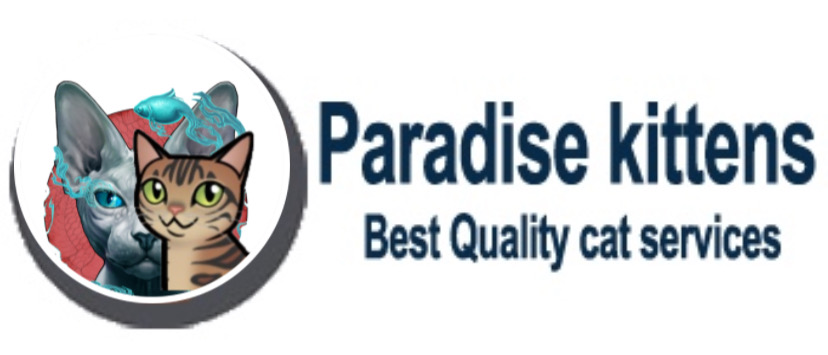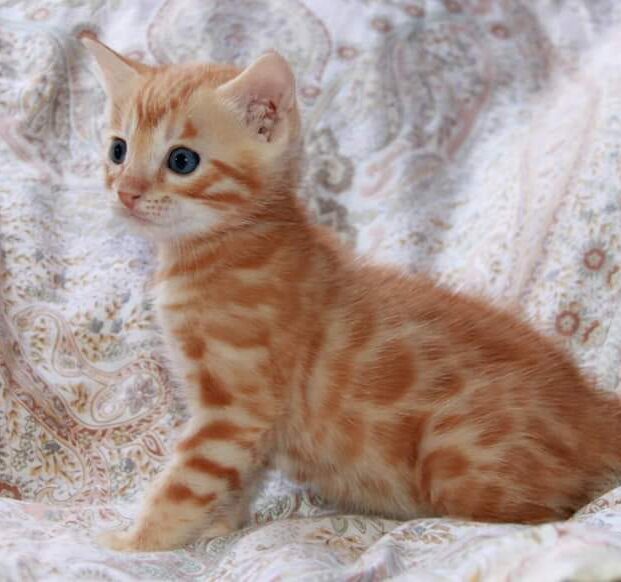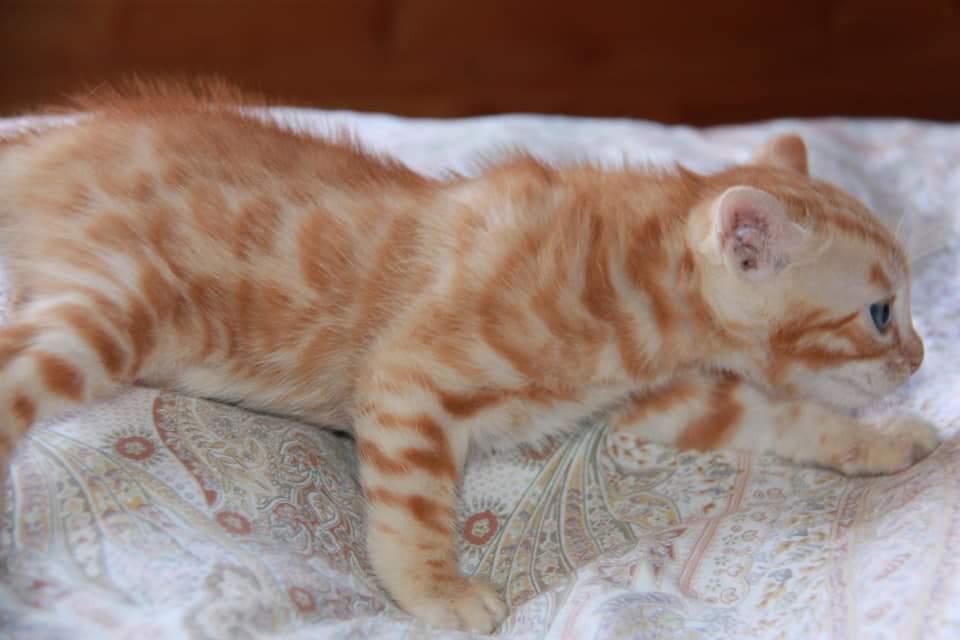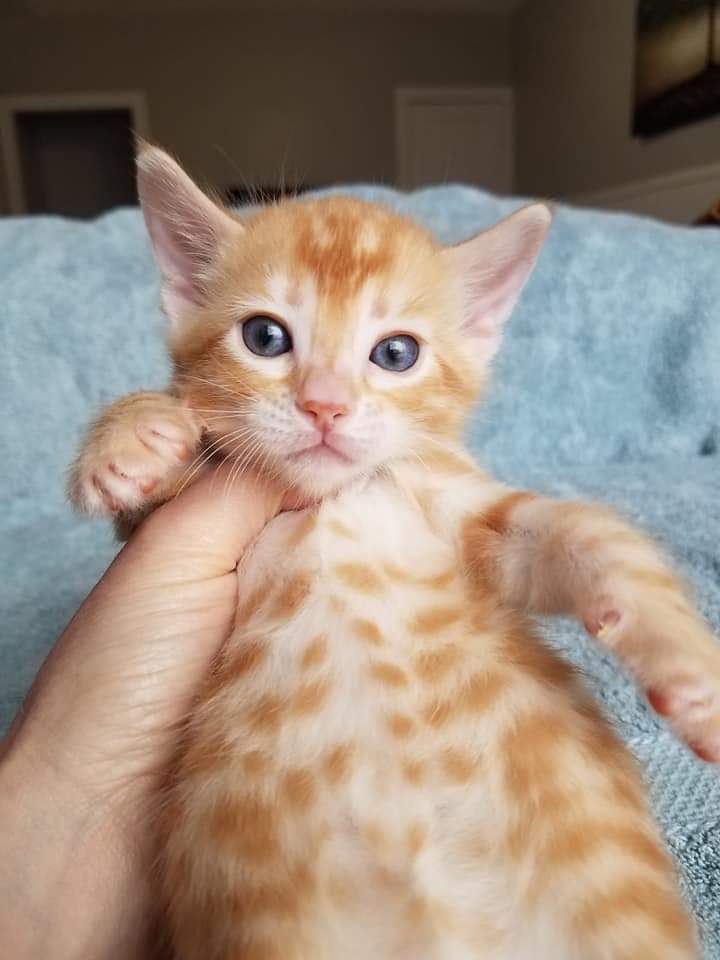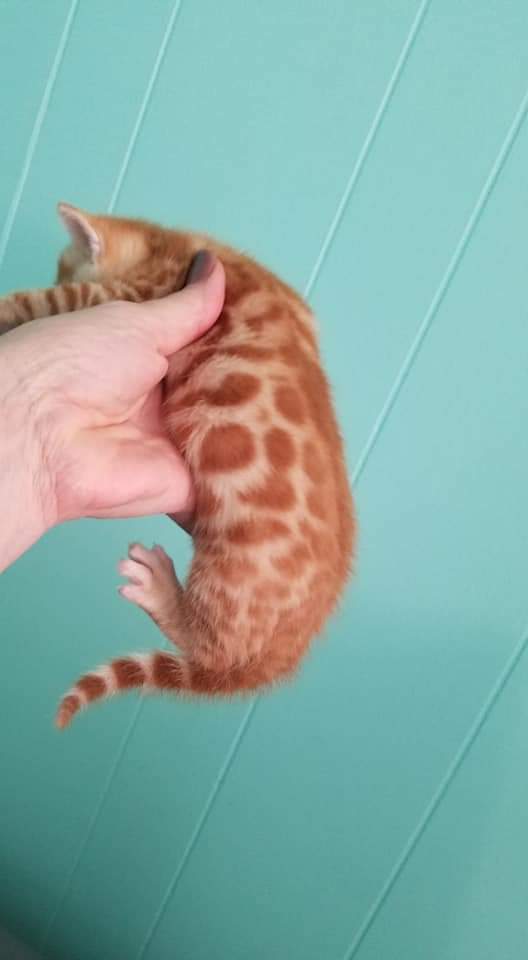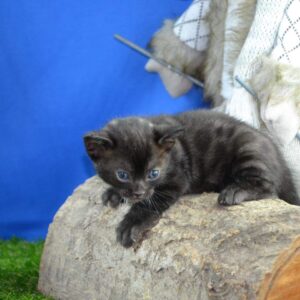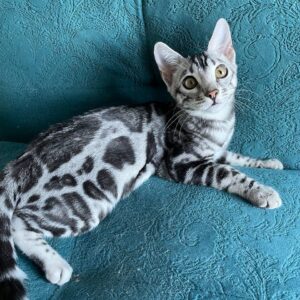Description
RED BENGAL KITTEN FOR SALE
Red Bengal Kitten For Sale is the most beautiful imitation of the snow leopard. She has the appearance of a big wild cat, but with the behavior and the size allowing you to pet him in the comfort of your home.
The responsible genes for this beautiful Bengal cat color come from the Siamese cat (lynx gene) and the Burmese cat (Sepia gene) that were used to create the Bengal breed in the very beginning.al cat, also known as seal sepia, has the darkest color of the 3 snow variants. With a greater contrast than the snow lynx Bengal cat, you can see his markings at birth.
9 Bengal Cat Colors & Patterns

The Bengal cat is a uniquely beautiful animal, having all the domestic cat attributes that cat lovers know and love, combined with spectacular patterns and colors that imitate their wild ancestors. Two major aspects differentiate modern Bengal Cats: their coat color and their coat markings. These colors and patterns can come in a large degree of variance and intensity, but the basic breed-recognized colors are brown, silver, and snow, and each of these colors can be patterned with either marbling, spots, or a combination of both.
With all these variations in colors and patterns and the inevitable combinations, it can be difficult to know where to start in finding the right Bengal to bring home. We’ve put together this comprehensive guide to Bengal colors and patterns to help you identify and choose from the wide varieties available.

Bengal Cat Colors
Bengals come in three standard, breed-recognized colors but can also come in a variety of “unrecognized” colors. While these colors are found in most domestic cats, the combination of color and unique patterning makes for a visually stunning animal. The spots or marbling can be in various shades and intensity and will give a beautiful contrast that is not found in other domestic cat breeds.
The standard recognized colors of Bengals are brown, silver, and snow, and unrecognized colors can include charcoal, blue, and melanistic (solid black), as described by TICA.

1.Brown Bengal Cat

Brown Bengals are one of the most popular varieties and can be found in color range variations that include descriptions like golden, creamy, honey, caramel, red, and orange, with an orange-brown or butter-coat being the preferred standard base coat. This base coat is usually beautifully contrasted with dark chestnut or black markings, which can be varied solid rosettes or marbling and can also be tricolor, typically a dark outline with graduated shades of browns inside.
This color variety, whether with spots or marbling, is often referred to as the Leopard Bengal due to its close resemblance to this big cat. They usually have green or golden eyes and a solid-black tipped tail.
2.Silver Bengal Cat
Silver Bengals have an almost pure white base coat that can vary from white to a steel-like silver shade, contrasted by black and grey spotted or marbling patterns. This can also include charcoal and blue shading in both base coat and patterns but should never include brown or golden tones on the feet or face. They will usually have green or golden eyes and a solid black-tipped tail.
red bengal kittens for sale
3.Snow Bengal Cat

The Snow Bengal comes in three different variations, and contrary to their name, their base coat is not pure white in color.
- Seal lynx point. These Bengals are the lightest of the snow variants and will often be born without any markings or faintly visible markings, at most. They have a creamy-white base coat that is contrasted by brown, grey, or tan spots or marbling. These beautiful cats often resemble snow leopards and are the only Bengals that have ice-blue eyes.
- Seal mink. Seal mink Bengals usually have a light brown, cream, or ivory base coat, with a darker brown or caramel spotted or marbled pattern. They will usually have blue-green or aqua eye color.
- Seal sepia. Usually the darkest of the snow variants, seal sepia Bengals have light chocolate or tan brown base coat that has various shades of brown or tan spotted or marbled markings. They are typically found with green or golden-brown eyes.

Non-recognized Bengal Cat Colors
Although these colors are not officially recognized by Bengal competition standards, these rare colors are just as striking as standard Bengal color variants. They are typically caused by recessive genes that can crop up among standard litters.
red bengal kittens for sale
4.Charcoal Bengal Cat
This color variant is more of an additional masking layer than a separate color, as it is usually described as a “ghost” layer that comes out on top of Bengal’s standard base coat. Charcoal layers can be seen in any of the standard color variations and are then described as charcoal silver, charcoal brown, etc. They will typically have a dark face mask, with a thick, dark stripe running down the length of their back, known as a “cape.”
5.Blue Bengal Cat

Blue Bengal variants are rare, and thus, these unusual cats are highly prized animals. They have a steel-blue or powder-blue base coat with occasional cream tones and a dark, grey-blue marbled or spotted patterning. They will typically have hazel brown or green eyes.
6.Black or Melanistic Bengal Cat
These prized cats are revered for their resemblance to black panthers and will typically have a base coat with marbled or spotted patterned colors that are almost indistinguishable from each other, giving them an almost solid black appearance. The patterns on these cats are usually referred to as “ghost markings,” because other than in bright sunlight, they are virtually invisible.

Bengal Cat Patterns
While a Bengal’s markings typically fall into two distinct categories — spotted and marbled — there is a wide variety within each category of pattern that Bengals can display. Spotted variants were the first recognized pattern type, with marbled cats coming soon after.
7.Spotted Bengal Cat

A spotted Bengal is the most popular and most recognizable pattern variety, at times closely resembling baby leopards. The spots are usually small to medium-sized patterns that are scattered all over the cat’s coat, with large, dark spots on a light background being the most highly prized variation. These spots can appear in many different colors and shapes, each with a distinct category described by breeders.
- Single spotted. This is the simplest variation of spotted Bengal, but just as eye-catching. The pattern consists of small monochrome spots that are spread on a contrasting base coat, without any gradient in color inside the pattern. The spots are similar to a cheetah in that there is no second color to the small spots, and they are usually a dark contrasting color, like dark grey, brown, or black.
- Cluster rosettes. Rosette patterns are spots that have two contrasting colors that are distinct from the base coat. Cluster rosettes are the least dramatic version, consisting of a center color that is darker than the base coat, punctuated by small clusters of even darker colored spots.
- Paw-print rosette. Similar to cluster rosettes, paw-print rosettes consist of dark spots edging one side of the second color only, but never enclosed. They resemble small paw prints strewn across the cat’s back.
- Clouded rosette. These rosettes are spaced close together and are large in size, with subtle signs of a second color around the edge.
- Doughnut rosette. This pattern is defined by spots that are surrounded by an even darker colored outline. This is one of the most popular spotted patterns, giving the cat a leopard-like appearance. They can also appear as what is known as pancake rosettes, which have thinner outlined rings than the doughnut rosettes.
- Arrowhead rosette. Arrowheads are a fairly uncommon pattern that can be monochrome or outlined, with varying degrees of a rosette. They are triangular-shaped patterns that point toward the back of the Bengal and can vary greatly in size and density.
8.Marbled Bengal Cat
The marbled pattern is a series of swirls and stripes that intermingle in a flowing, random pattern made up of two or more color variations. This patterning can come in a wide variety of shapes and colors, which are typically divided into four distinct categories by breeders.
- Horizontal Flowing. These markings are much like the markings seen on a Boa Constrictor, flowing horizontally along the spine of the cat.
- Reduced horizontal flow. Also known as “high-acreage,” this pattern has a high ratio of background to markings and is prized due to its close resemblance to wild cats.
- Sheeted flow. This pattern has a high ratio of markings to base coat, with little negative space. This can be especially prominent in some Bengal kittens, and it can take up to two years before the patterns properly “open up.”
- Chaos pattern. The chaos pattern lives up to its name and is a dramatic amalgamation of all of the above. It consists of chaotic swirls, flows, and colors, punctuated by occasional splashes of color and patterns
9.Sparbled Bengal Cat

A sparbled coat is the meeting of spotted and marbled varieties, creating a marbled and rosette clashing of markings. Although it is not an officially recognized pattern, it is still beautiful to behold, especially when there is significant negative space between the chaotic patterns. This coat variety can become all the more dramatic when mixed with clouded or charcoal markings, making for a unique looking Bengal indeed.

Additional Bengal Cat Characteristics
If all that variation is not enough for you, there is yet more to the incredible Bengal Cat!
- Glitter. While not all Bengals have it, some have a shiny, glitter-like appearance to their coat. This sparkling, shimmering effect is eye-catching, to say the least, and is visible even in low light. This unique trait was first seen in cats among Bengal breeds, and although it is beautiful and dramatic in appearance, it has a simple explanation behind it. The “glitter” effect is caused by random translucent hair shafts in the cat’s coat. These shafts catch and reflect light, causing the hair to shimmer and shine.
- White Stomach. Breeders have long attempted to bring the characteristic white-spotted tummy of Asian Leopard Cats into the Bengal breed, but it is still exceedingly rare, and these cats are thus highly prized varieties.
- Long-haired Bengals. Some Bengals have long and silky coats, which are more commonly known as Cashmere Bengals. Because many domestic cats were used in the creation of the Bengal breed, it is thought that this genetic trait comes from one of these many crossings. They are not recognized by most cat registries, but some breeders have chosen to develop this trait further into the Cashmere variation.
- Primordial pouch. Another trait that comes from the Bengal’s wild ancestry is the primordial pouch, found on both males and females in the breed. It is located on the cat’s belly, with the appearance of a flap of loose skin hanging between the back legs. This pouch is often confused with a cat being overweight or lactating, but it has a few biological uses. Some speculate that to store extra food, to facilitate movement due to its elasticity, and to insulate the cat’s internal organs.
- Frosted phase. At around three weeks old, Bengal kittens will often go through a unique fuzzy stage of growth, commonly referred to as the frosted phase or “uglies.” This process entails the kitten’s coat becoming fuzzy and messy in appearance, similar to what Asian Leopard kittens go through in the wild. This unique stage of growth is thought to enhance the kitten’s camouflage at this vulnerable stage of growth. But don’t worry, it is usually gone by the time they are three months old!

Final Thoughts: Bengal Cat Colors
These unique and wild-looking cats have dramatic variations of color and patterns, resembling the wild ancestors they came from. These cats are the gentle, domesticated versions of leopards, tigers, cheetahs, and jaguars, with almost all big cats being represented in miniature
COLOUR AND PATTERN CHARTS
red bengal kittens for sale
The charts on this page can be downloaded (right click and “save as”) full size for use in breed tutorials and web-pages. This page doesn’t go into inheritance genetics in depth, but is intended to depict the range of colours and patterns. Any genetics contents is extremely simplified! Similar color charts have appeared in Wright & Walters (The Book of the Cat, 1980) and in Robinson’s Genetics (1977 onwards) and I’ve updated those with recent developments and made them freely available. The charts are laid out in the normal 2-axis format seen in textbooks: the most dominant allele is at the left (black) and in descending order of dominance to the most recessive allele on the right (cinnamon). Below that are the two dilution modifiers. The eumelanin (black) series and the phaeomelanin (red) series are alongside for comparison. In several cases, I’ve taken the liberty of coining terms for certain patterns for ease of describing something not formally described by a cat fancy standard (some of these terms have since been used by other people creating their own charts from my information). There are also charts of 2 sought-after patterns that haven’t been confirmed in cats. This page may load slowly due to the number of downloadable images.
The explanatory text and the charts are in the public domain for breeders and can be edited as required for your own breed. Please credit the source if you reproduce the contents because as well as material from cat breed standards and genetics texts, the charts depict material from my own studies which are described (with photos) elsewhere on Messybeast.com.
Note: I’m aware that Messybeast information, including novel terminology, was reproduced by deviantart’s “cedarseed” without attribution and that hir successor, “majnouna”, objects to me creating my own charts from my own information. Depicting my own content pictorially is not plagiarism as alleged by said individual, but is a legitimate use of my own collated data presented in standard textbook format.
| I’ve used this order of precedence for naming conventions:
1. Use existing cat fancy terminology OR 2. Use the breed developer’s terminology (e.g. Karpati, Copper) OR 3. Borrow terminology from other livestock (e.g. belted, sheeted, cobweb) OR 4. Use descriptive plain English (swirled, skunk-stripe) OR 5. For seen-once mutations, use the location where it was observed (e.g. Finnish) OR 6. Use medical term (e.g. periocular leukotrichia) |
1. Self (Solid) Colours
There are 9 eumelanin-based (black-based) self colours and 3 phaeomelanin-based (red-based) self colours. The red-based colours are genetically solid, but because of the way the red pigment and non-agouti gene interact, they may have discernible tabby markings.
Self white (not shown) masks any underlying colour. The cat may be genetically black, genetically cream etc, but the presence of the white gene obscures the colour. Other self white cats are the result of extreme expression of the white spotting gene discussed later.
There are 2 late colour change genes that result in additional self colours: amber (Norwegian Forest Cats) and Russet (Burmese). These cause black pigment to gradually fade and become reddish. These charts are in a later section.
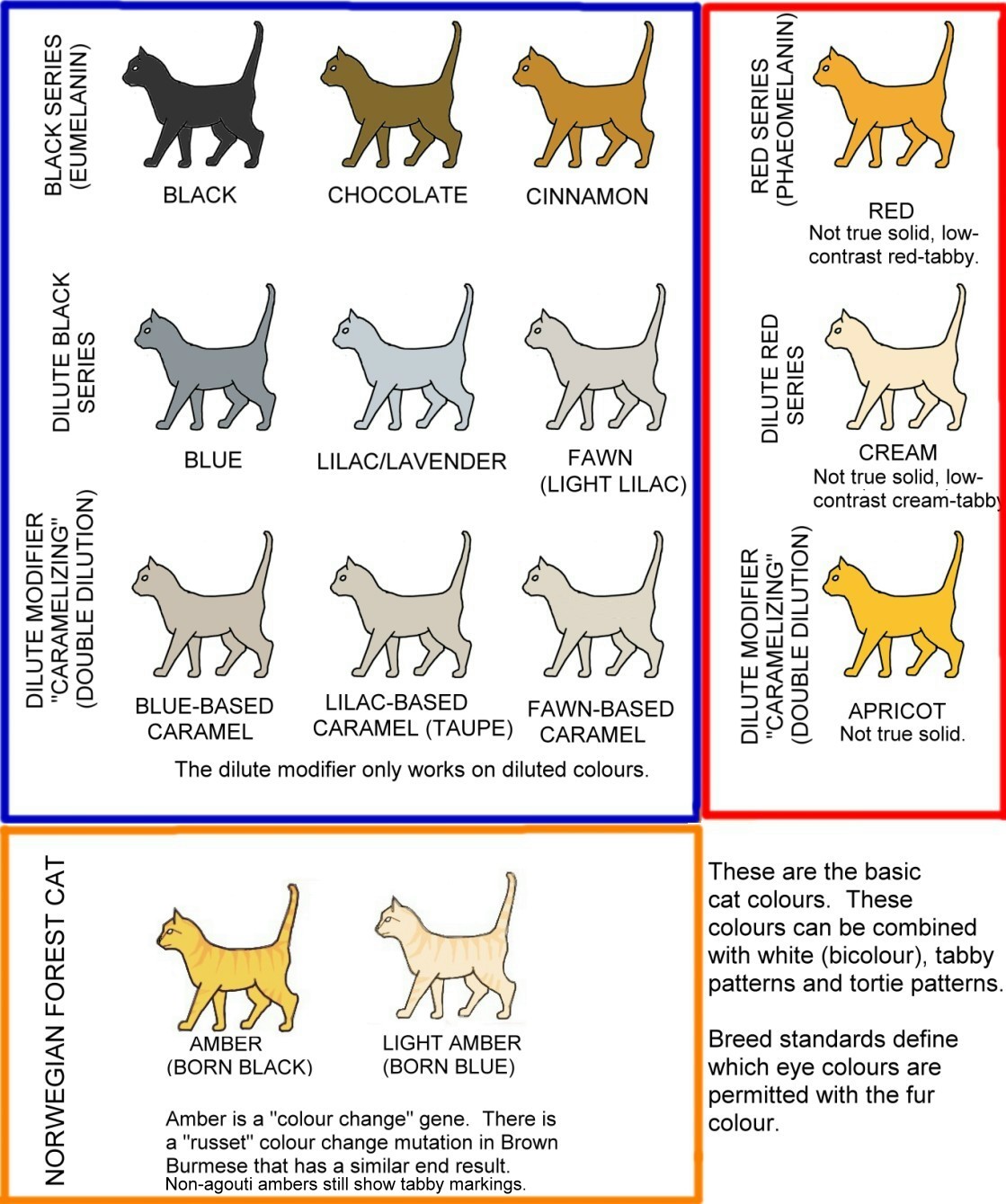
2. White Spotting
The white spotting gene causes variable white markings. I’ve depicted this on a black cat, but any colour or pattern can have white markings. Generally speaking, a cat with one copy of the white spotting gene will be anywhere from 0% to 50% white while a cat with two copies of the gene will be anywhere from 50% to 100% white as shown on the chart. White spotting is a dominant trait so it is rare that the white is not discernible due to developmental factor (it is more likely that a non-white spotted cat born to white spotted parents has not inherited a white spotting gene from either parent).
Although white spotting is depicted as a continuous series from no white through to wholly white, there are believed to be genes, not yet identified, for the white throat locket and white brisket spots. When bred together, cats with a white throat locket and/or white brisket spots do not produce cats with higher degrees of white spotting because they do not have the main white spotting gene.
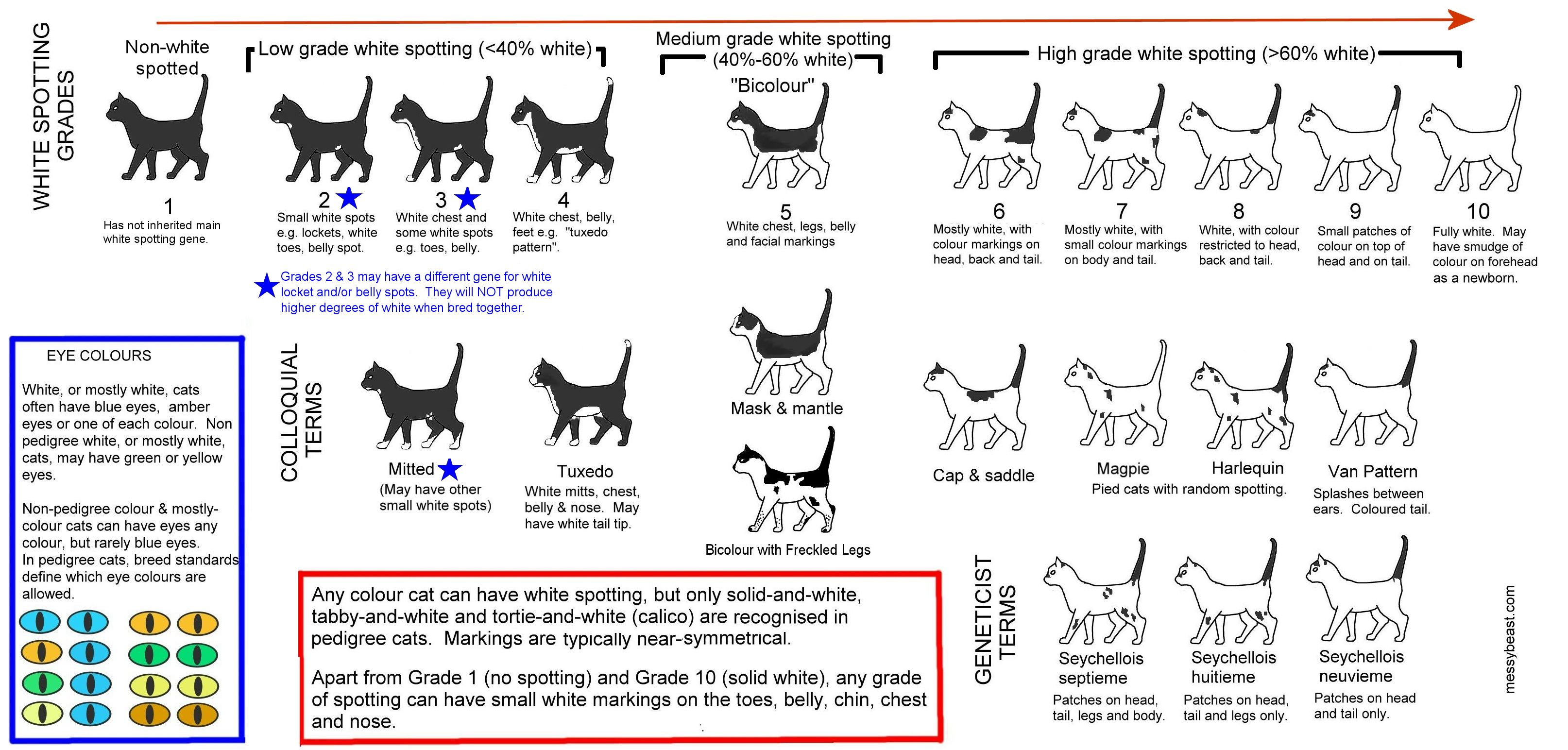

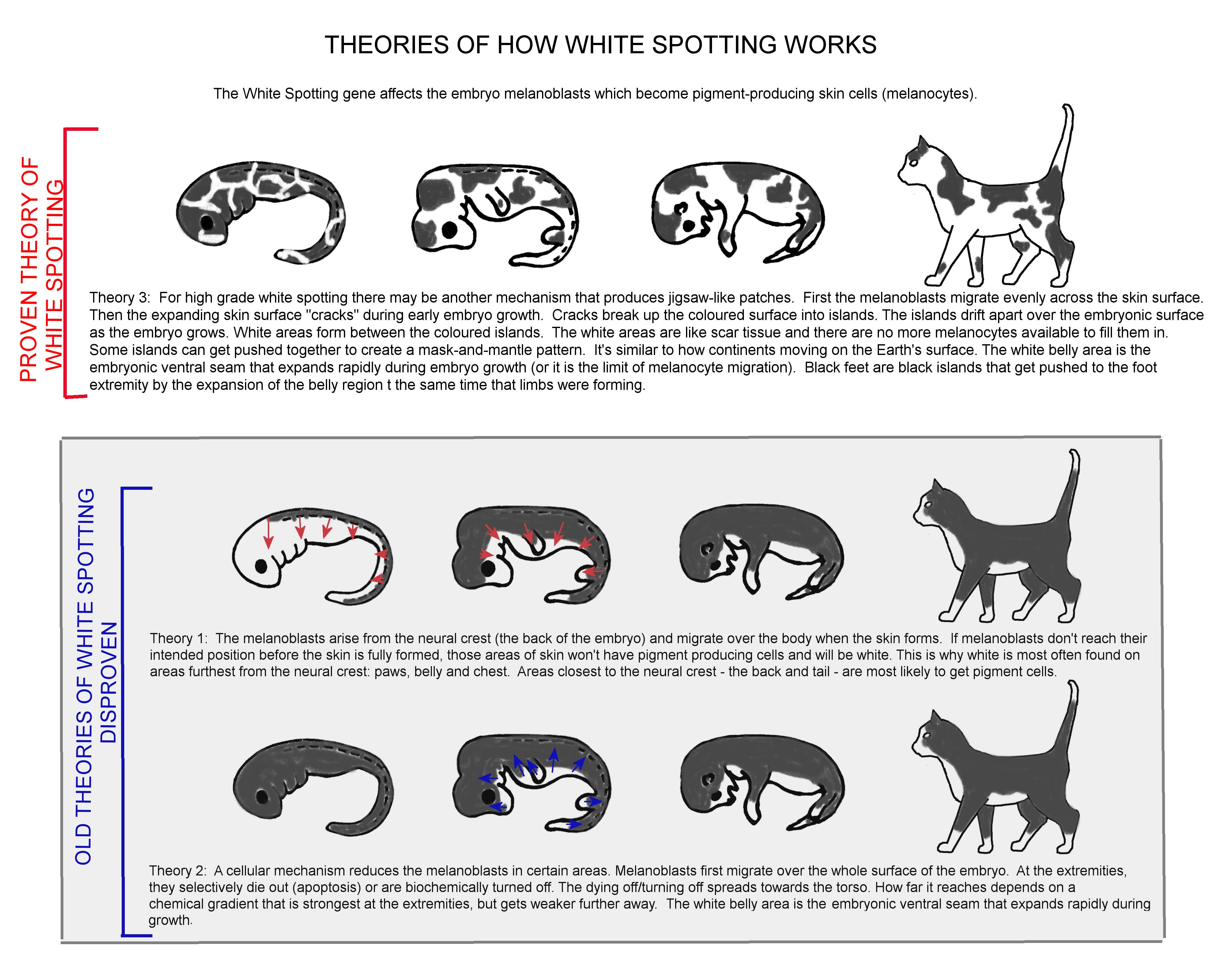
2a. Thai White Spotting (Skunk Stripe)
This pattern is found in Thai cats and is depicted in old manuscripts and illustrations. Cats with up to 60% white also have a distinct white dorsal stripe. This marking may be present, but is less distinctive, on cats with higher degrees of white spotting where the coloured markings naturally break up. The dorsal stripe varies in width. The white tail may have one or more complete or partial coloured bands near the tail tip.
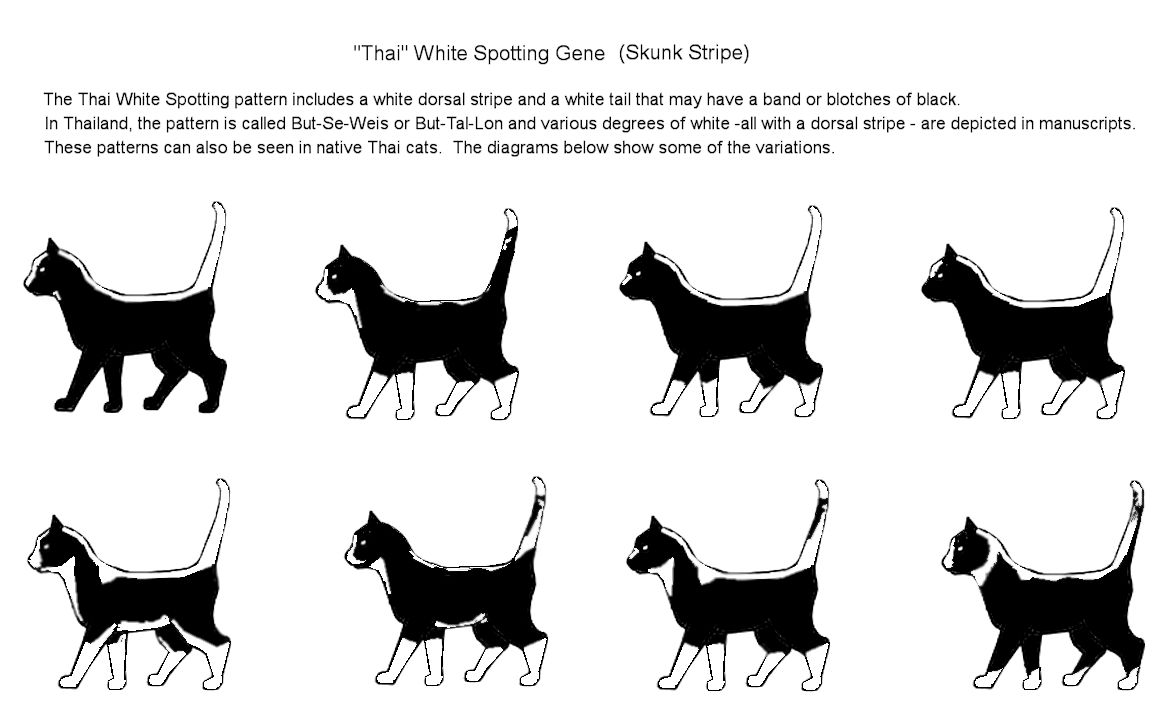
2b. Russian Topaz White Markings
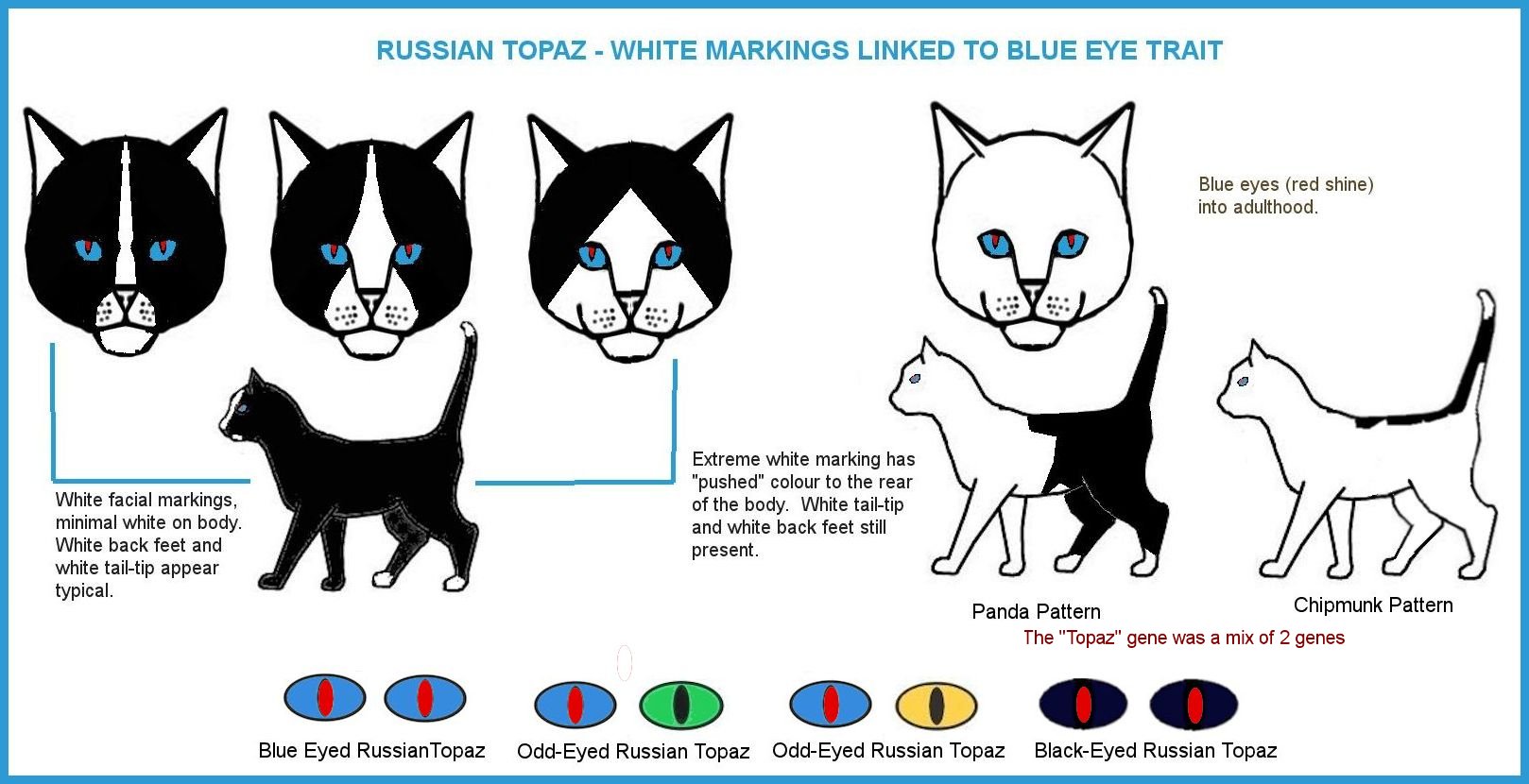
2c. Other White Markings
Other white markings are not linked to the white spotting gene. Some are due to newly emerging gene mutations (e.g. the “Finnish” mutation, the roan mutation) and some are due to developmental anomalies or to illness/injury. Some of the terminology has been borrowed from other livestock that exhibits the pattern depicted.
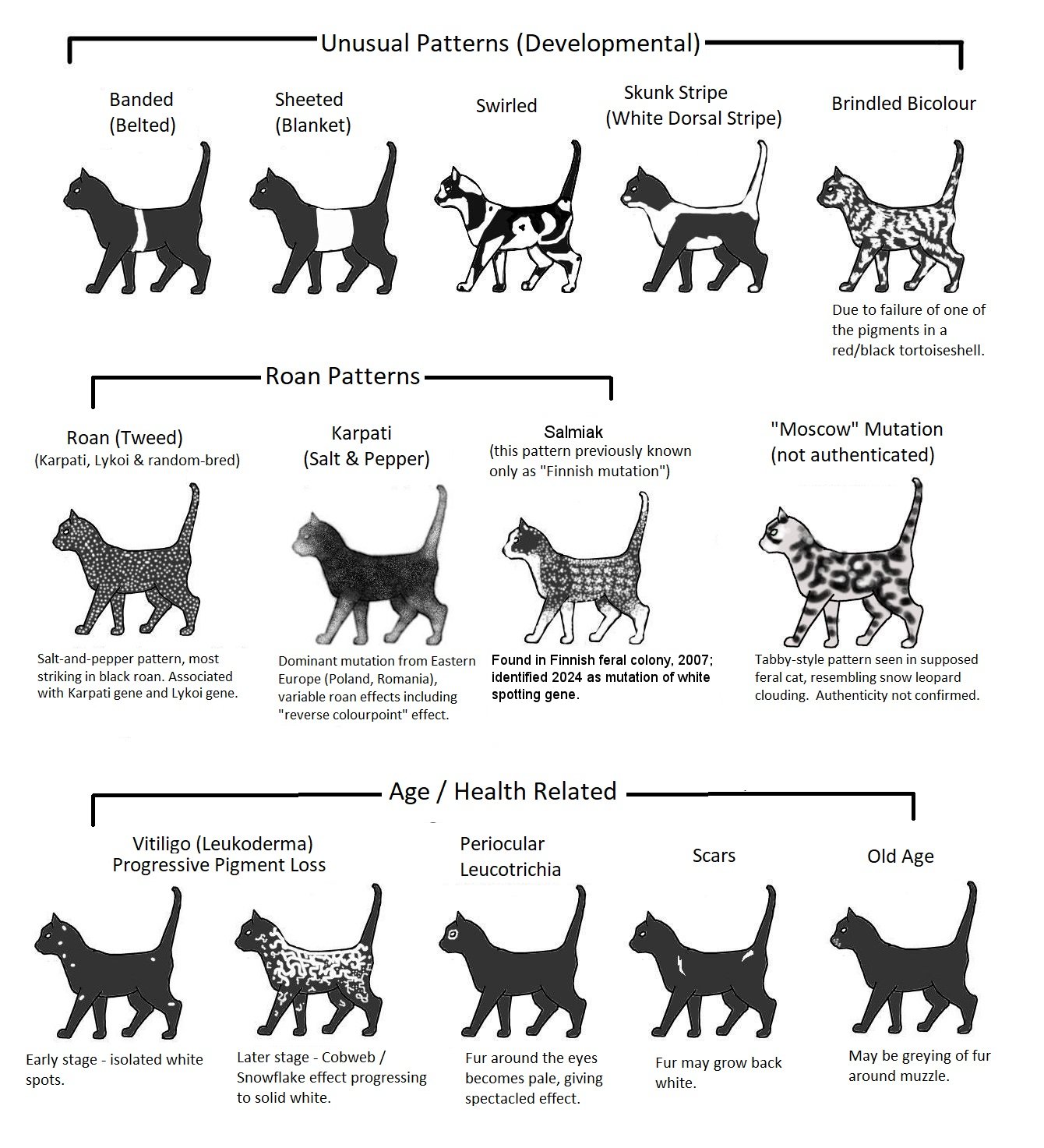
2d. White Markings Combined with Tortoiseshell

3a. Tabbies – Patterns
The main tabby patterns are agouti (ticked/Abyssinian), mackerel, classic and spotted. Agouti (unpatterned) tabbies have ticked fur, but almost no striped markings except residual barring on the legs, tail, head and chest. Mackerel tabbies have thin striped markings while classic tabbies have blotched markings. Spotted tabbies can be due to broken mackerel stripes (in which case the spots are not so rounded) or to a spotting gene. The spotting gene breaks up the underlying mackerel or classic tabby pattern into spots. Some classic tabbies display a dark “cape” due to heavy markings; their agouti areas may be reduced to small patches on a black background.
There are also several modified tabby patterns produced by selective breeding, mutation or by crossing to a wild species. Strictly speaking, the Bengal marbled pattern should be a horizontally aligned clouded pattern inherited from the Asian Leopard Cat, but in most Bengals it is a slightly modified classic tabby pattern.
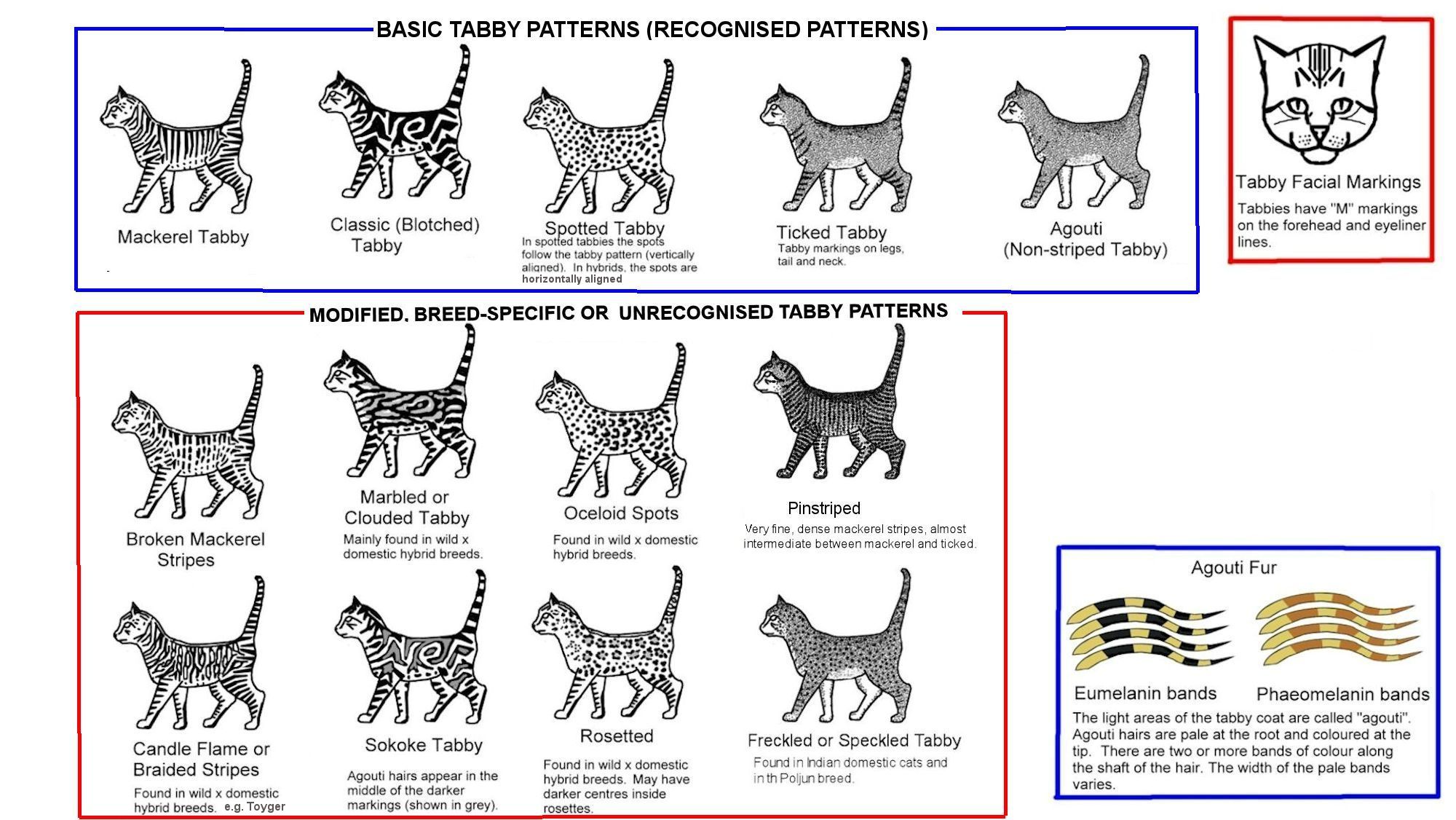
3b. Tabbies – Colours
The charts below show a generic pattern, but any of the tabby patterns can occur with these colours. In marbled and rosetted tabbies, the colour inside the dark markings may be richer than the background colour.
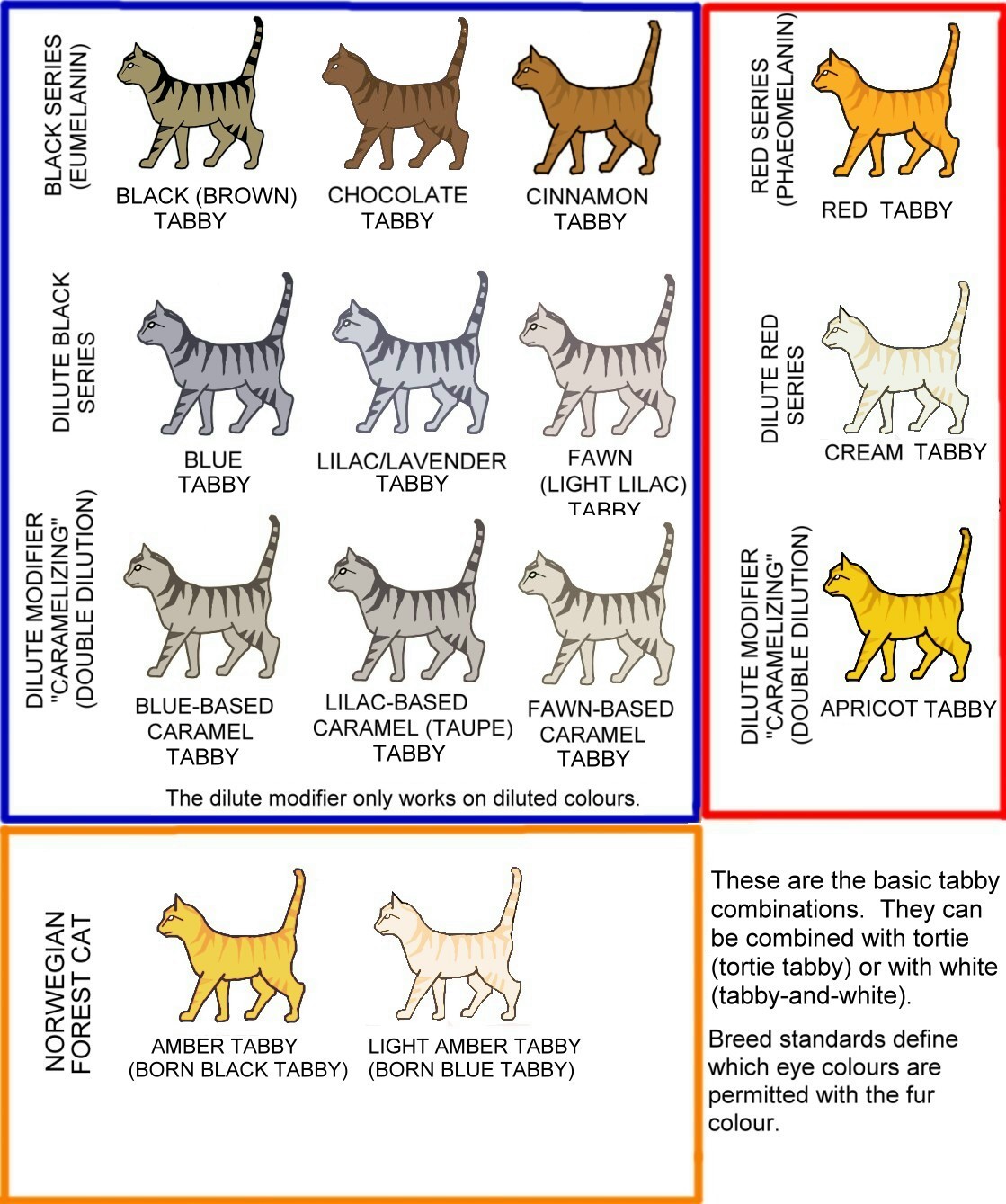
Red tabbies are variable in colour from sandy yellow (marmalade) through to the rich red found in show cats. This is due to polygenes that increase or decrease the richness of the red tones. By selective breeding for a rich colour, exhibition quality red tabbies have much deeper colours than mosr random-bred “ginger” cats.
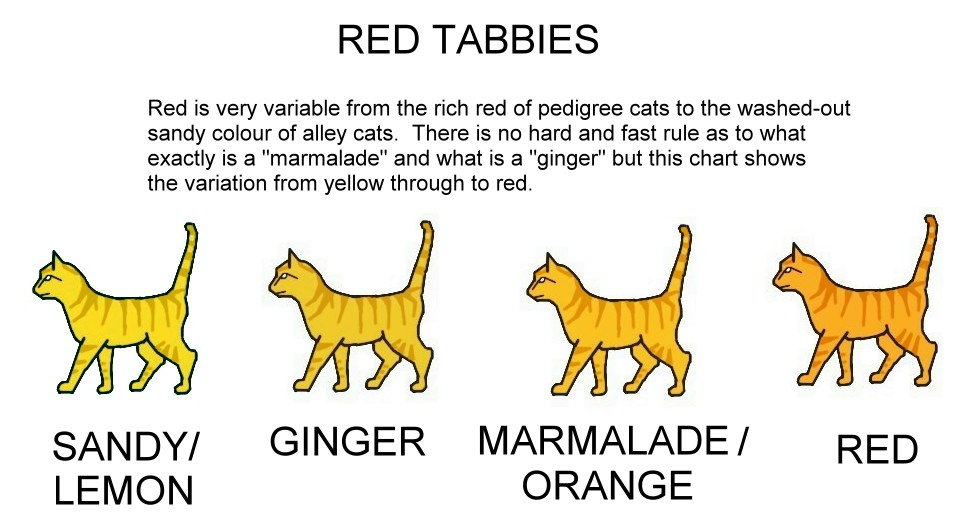
3c. Ticked Tabby Colours
The standard colours manifest differently in ticked (unpatterned) tabbies.
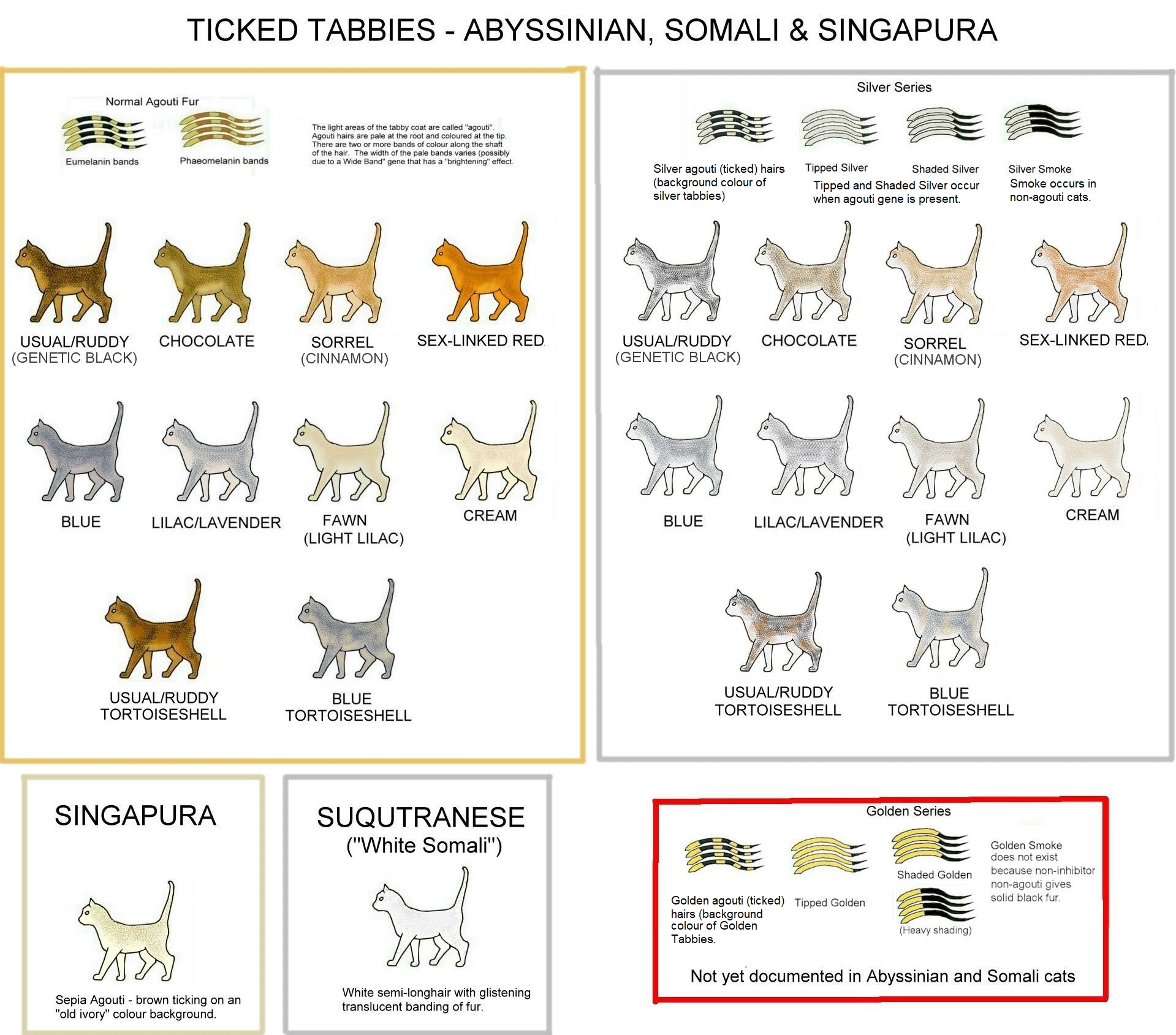
3d. Charcoal Bengal and Charcoal Savannah
An agouti gene inherited from the Asian Leopard Cat has given rise to another modified tabby pattern in the Bengal and Savannah (which has some Bengal ancestry). The charcoal pattern reduces the amount of rufousing (red tones) in the coat giving it cooler, greyer tones. It affects the markings to produce a dark nose, dark “Zorro” mask on the face and a dark cape on the back. Charcoal is a pattern, rather than a colour, and in Bengals it can be combined with silver (inhibitor), sepia, mink and snow colours (from the colourpoint series).
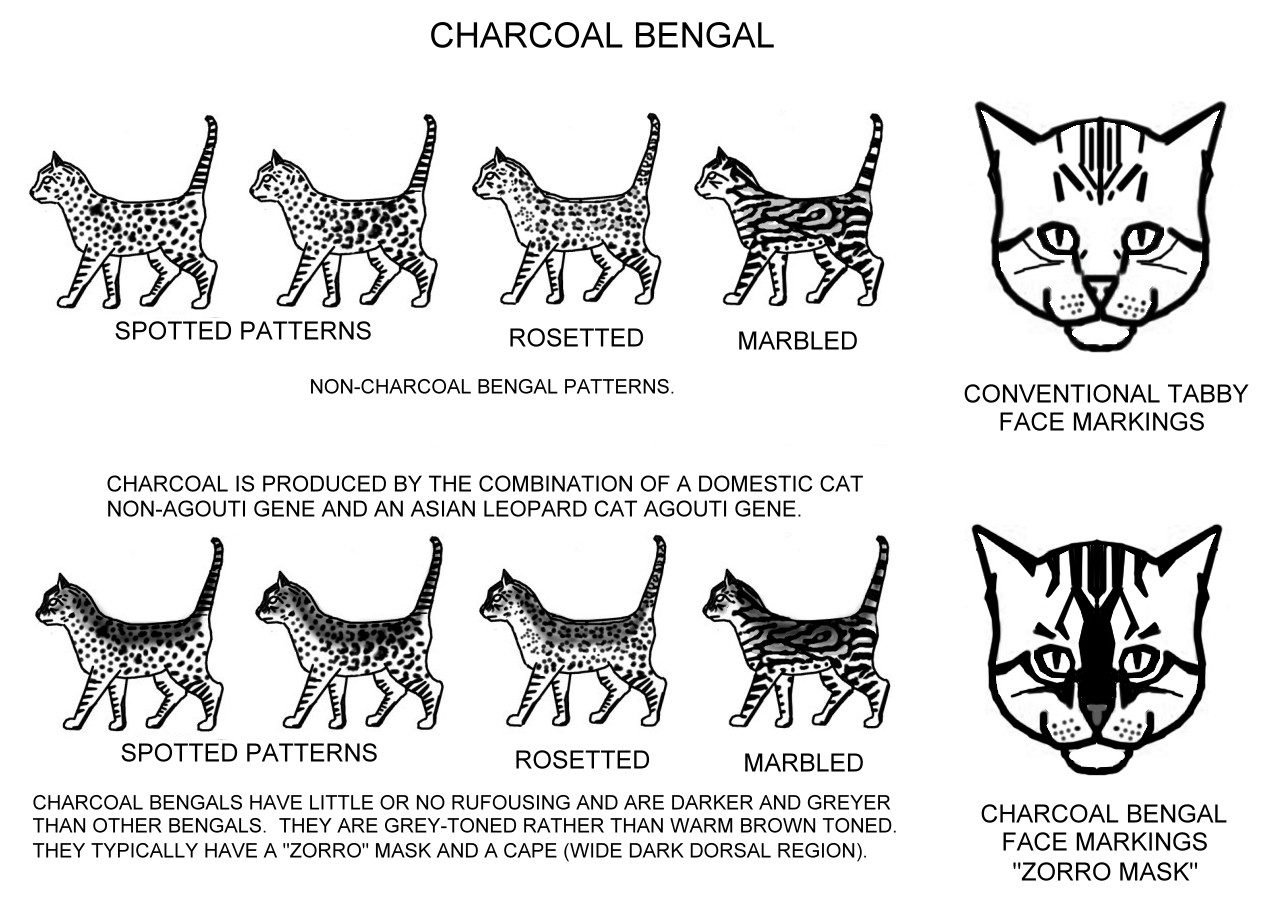
4. Tortoiseshell, Tortoiseshell-and-White (Calico)
Tortoiseshell cats have a mix of a eumelanin colour with the corresponding phaeomelanin colour. This means dense with dense as in black with red, or dilute with dilute as in lilac/lavender with cream. The phaeomelanin-pigmented areas (red, cream or apricot) may show residual tabby markings. Where there is no white spotting or a low level of white spotting, the two tortie colours tend to be well brindled (intermixed). With greater degrees of white spotting, the colours form larger, well-defined areas. This is due to the way the pigmented cells spread in the developing embryo. In North America, tortie-and-white cats are known as calico.
Because the red colour is carried on the X chromosome and requires XX (female) genetic make-up, tortoiseshell is uncommon in male cats. It sometimes occurs as a result of developmental or genetic anomalies.
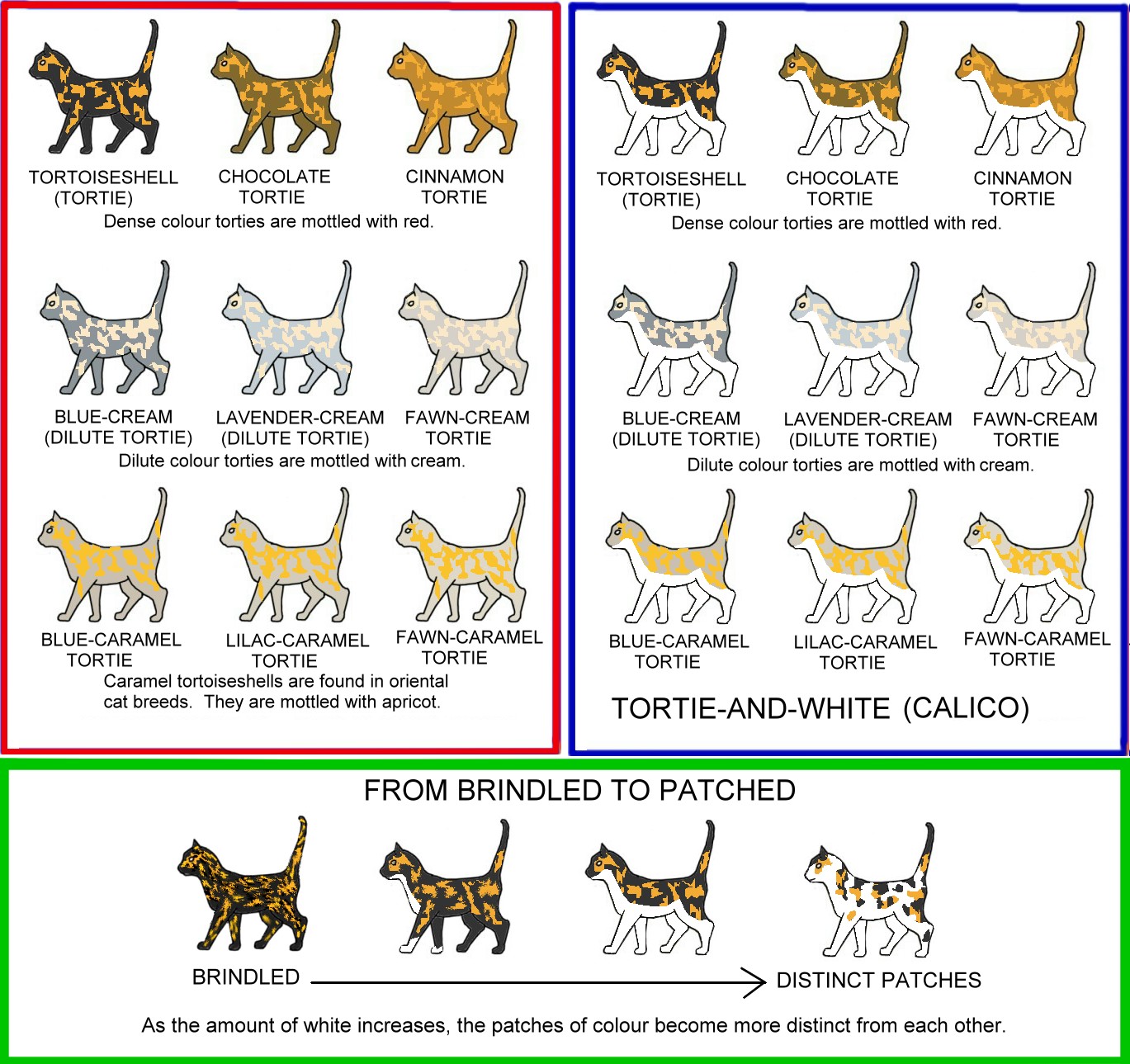
5. Tortoiseshell Tabby (with/without white)
Where tortie and tabby patterns are combined, the cat has different colour tabby patches e.g. black/brown tabby with red tabby instead of solid colour patches. These are known as patched tabbies in Europe and torbies in North America. When white markings are present, they may be called torbico in North America.
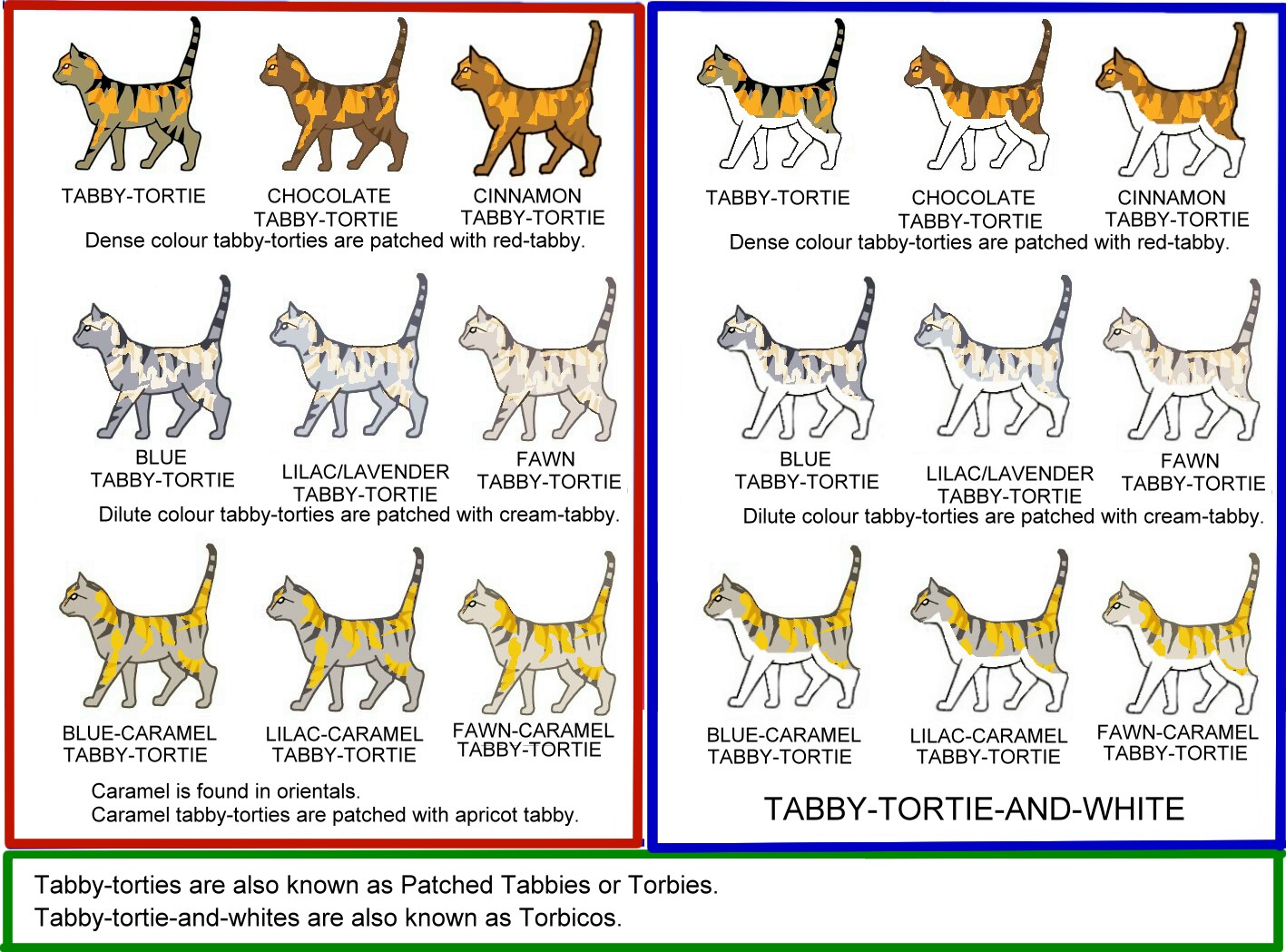
6. Silver and Golden Series
Normal agouti hairs have bands of light and dark pigment corresponding to the coat colour e.g. black and brown bands for genetically black cats, red and cream bands for genetically red cats. When the silver gene is present, the light bands are pale grey or nearly white. In genetically tabby (agouti) cats, this results in a tabby or ticked pattern on a silver base. Depending on the degree of ticking, this ranges from tipped (chinchilla) to shaded to silver tabby. When the silver gene is combined with a self (non-agouti) colour, the result is smoke. Some smoke kittens may show a residual tabby pattern until they get their full adult coat.
The mechanism for golden is generally analogous to silver, but appears due to the wide band gene that lightens and brightens the background colour of agouti regions of the coat. Therefore it is debateable whether golden smokes exist. Other genes can give the impression of golden e.g. high levels of rufousing in breeds with wildcat ancestry.
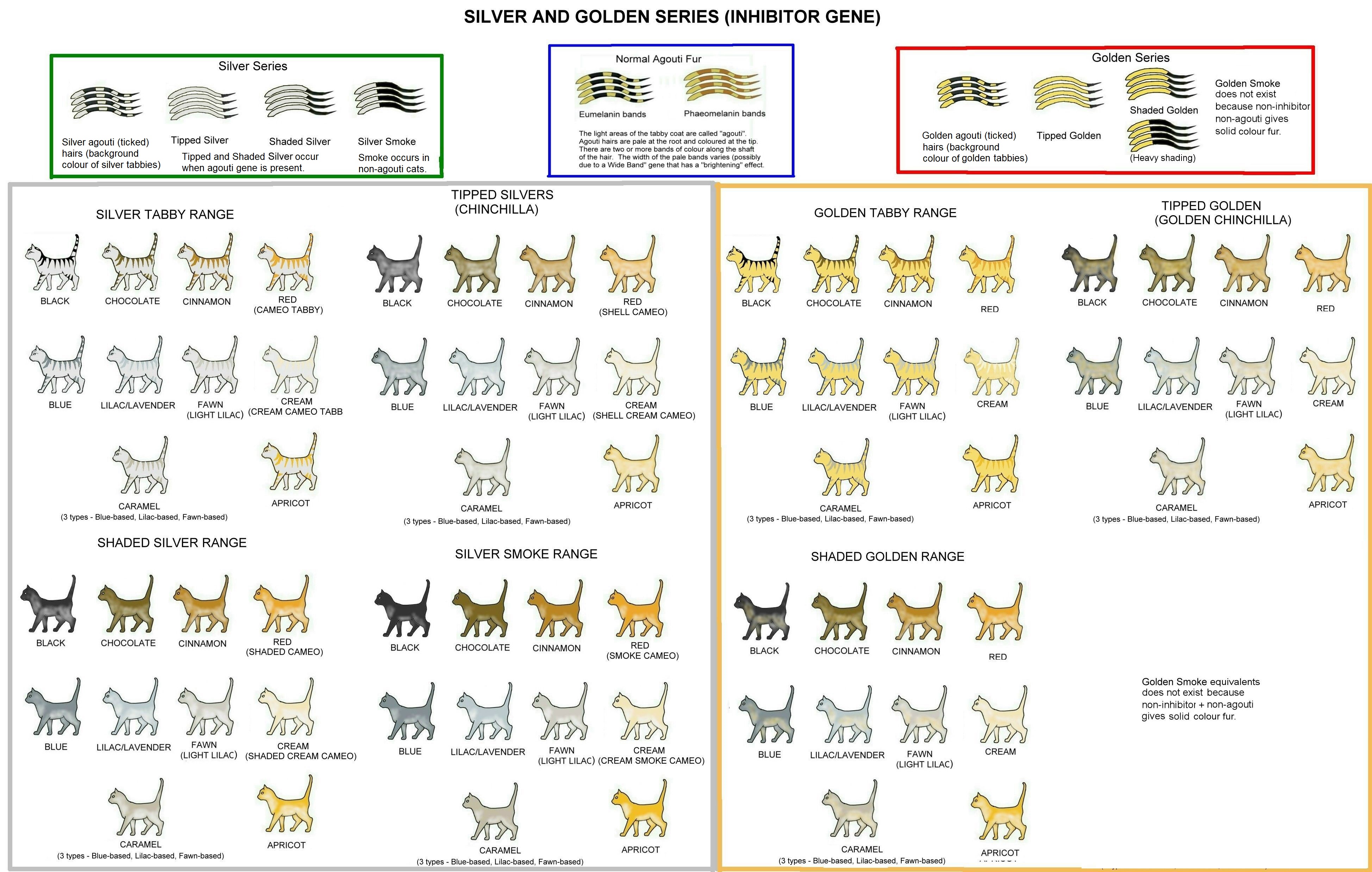
6a. Silver and Golden Torties & Tabby-Torties
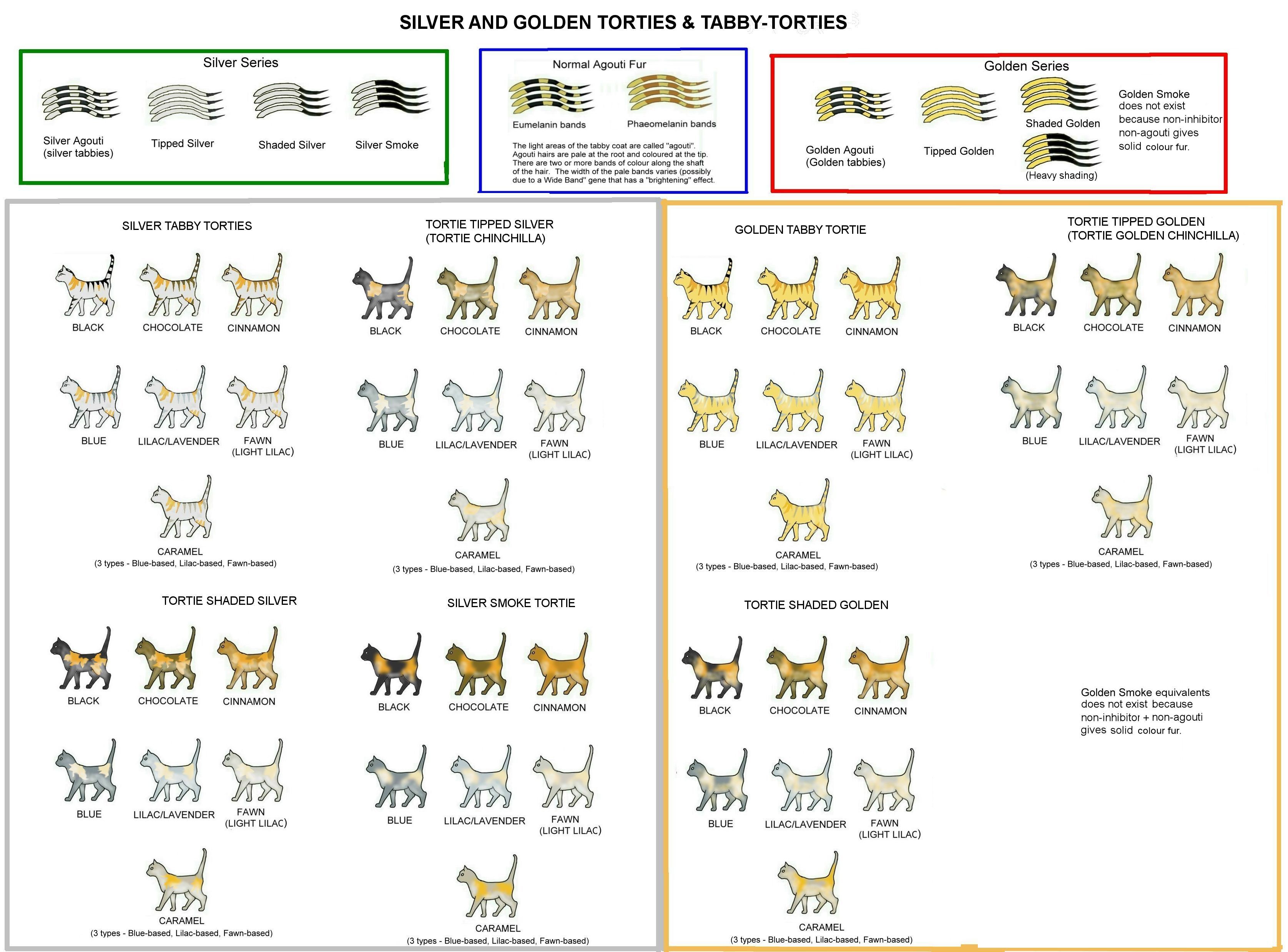
6b. Sunshine and “Bimetallic”
In Persians, Exotics and British Shorthairs, golden results from two copies of the recessive inhibitor gene combined with the wide band gene. In Siberians, the Sunshine colour is also inherited recessively but is not due to the inhibitor gene. It brightens the agouti (ticked) areas of the coat. The effect is often patchy on the coat. Sunshine silver looks different from a silver with rufism; the nose leather is pinkish unlike that of a tabby cat. The red colour of a sunshine red tabbies and sunshine torties is brighter and the paws are lighter. The absence of pigment in the sunshine tabbies extends beyond the edges of the nose leather so they have no nose-liner and have whitish fur at the bottom of the nose.
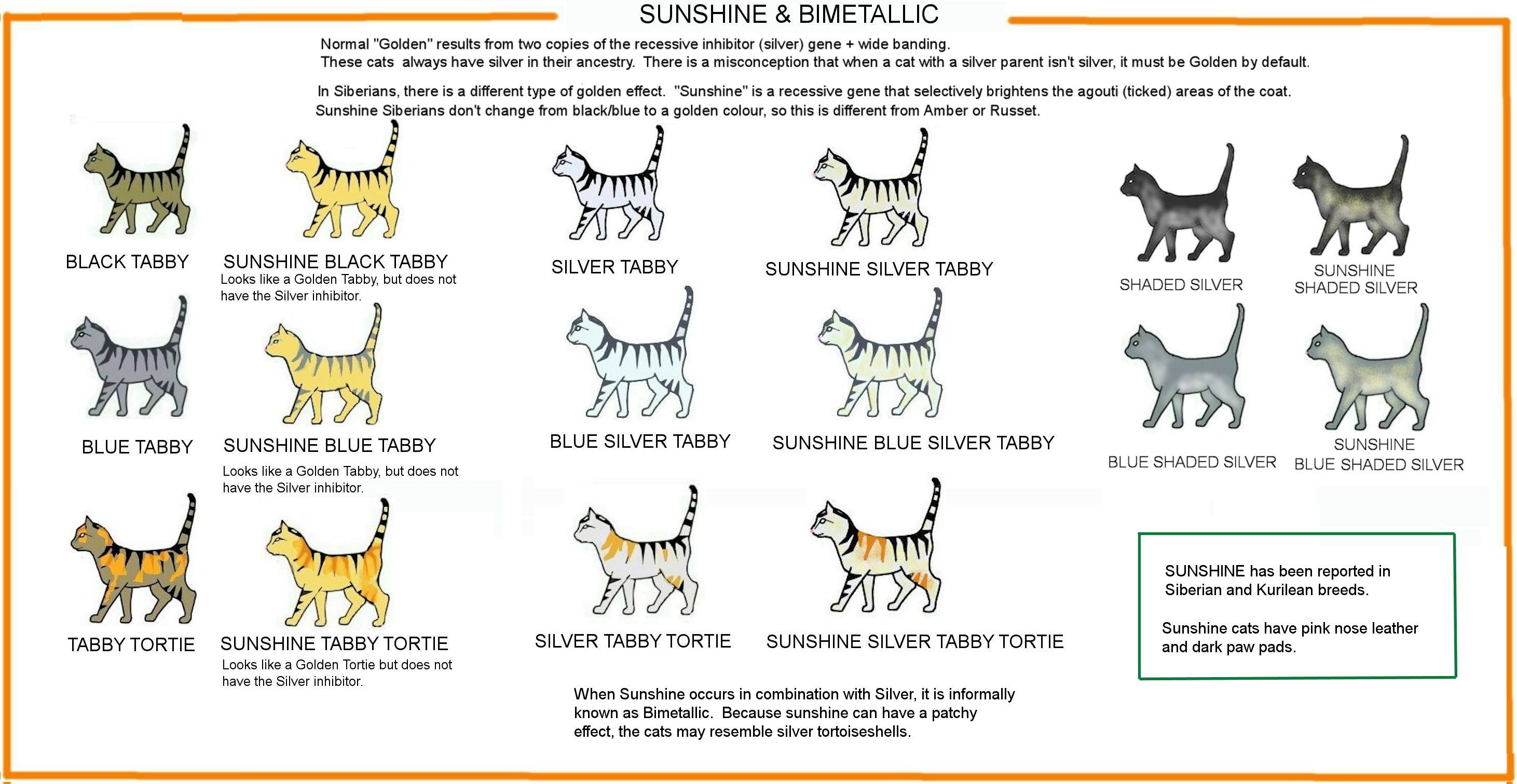
7. Colourpoints
There are 3 levels of colourpointing seen in cats. These are all due to temperature dependent albinism genes that cause cooler parts of the body to develop darker pigment. The first is the familiar high-contrast “Siamese” pattern known to geneticists as colourpoint or Himalayan pattern. The second is the low-contrast Burmese colour restriction, often referred to as sepia pointing (because it was first seen in brown/sepia Burmese). Intermediate between these is the mink pattern (Tonkinese colour restriction) caused when the Siamese and Burmese colour restriction genes interact.
The points may be solid, tabby or tortie colours. With Siamese colour restriction the torso is a shade of cream or ivory although some cats show “breakthrough markings” especially as they age. With Burmese colour restriction, the torso is marked with a slightly paler version of the colour and pattern. With Mink, the level of colour/pattern displayed on the torso is intermediate between those extremes.
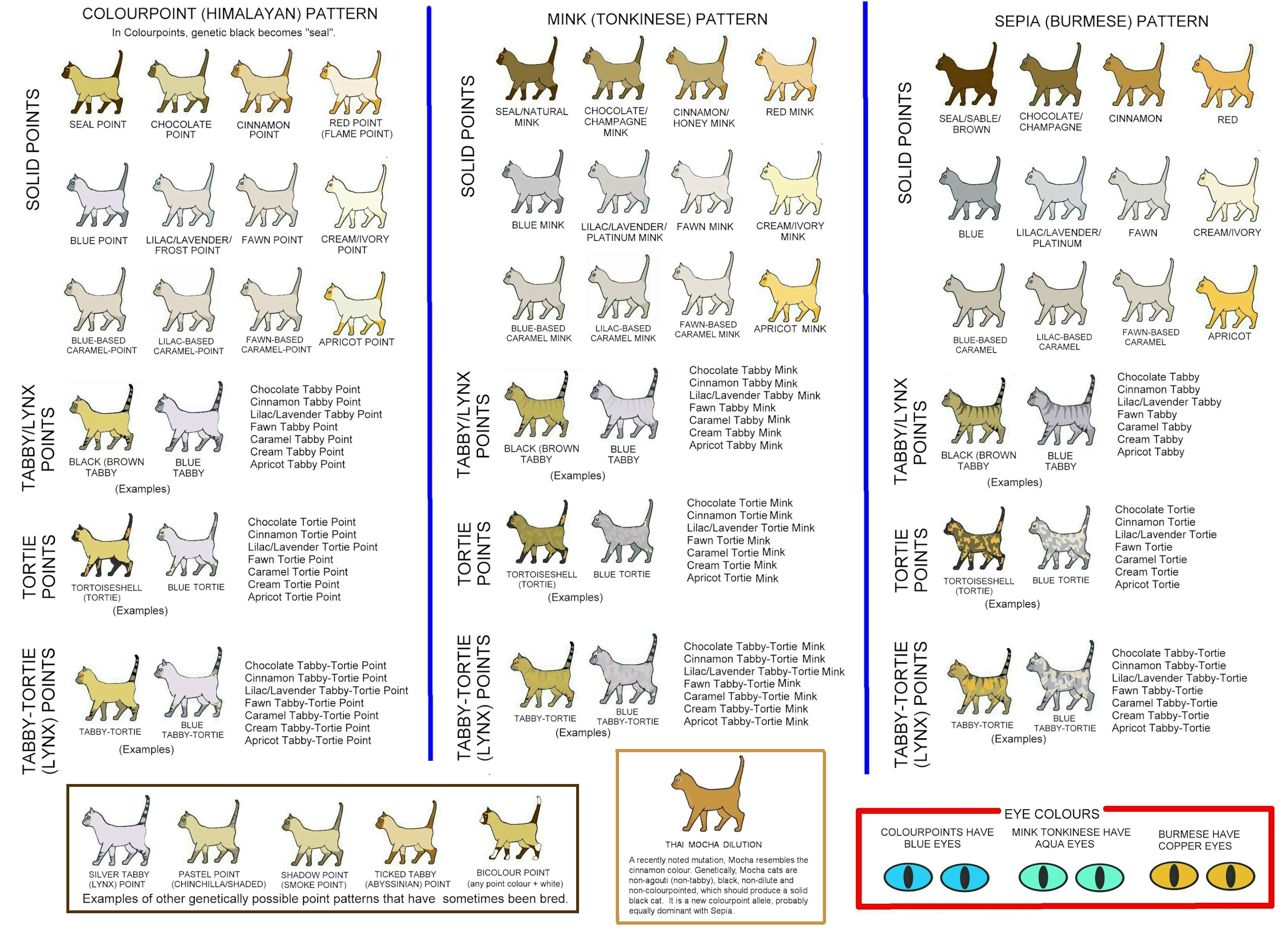
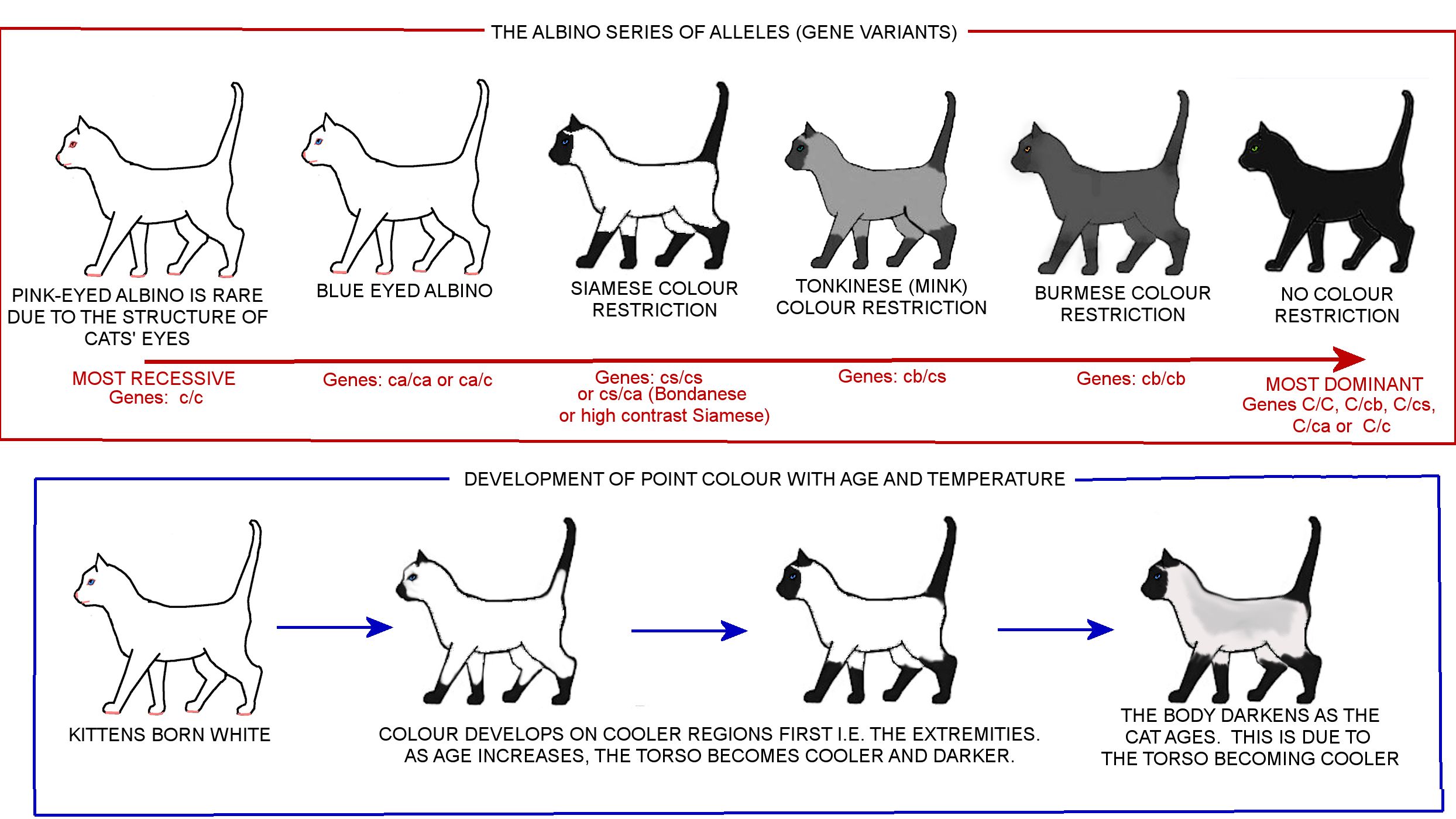
7a. Ragdoll & Bicolourpoints
Some breeds combine colourpointing (usually Siamese colour restriction) with the white spotting gene. Breeders generally prefer a low level of white spotting that does not wholly obscure the coloured points. Separate genes are believed to control the uniformly expressed white mitting in certain breeds.
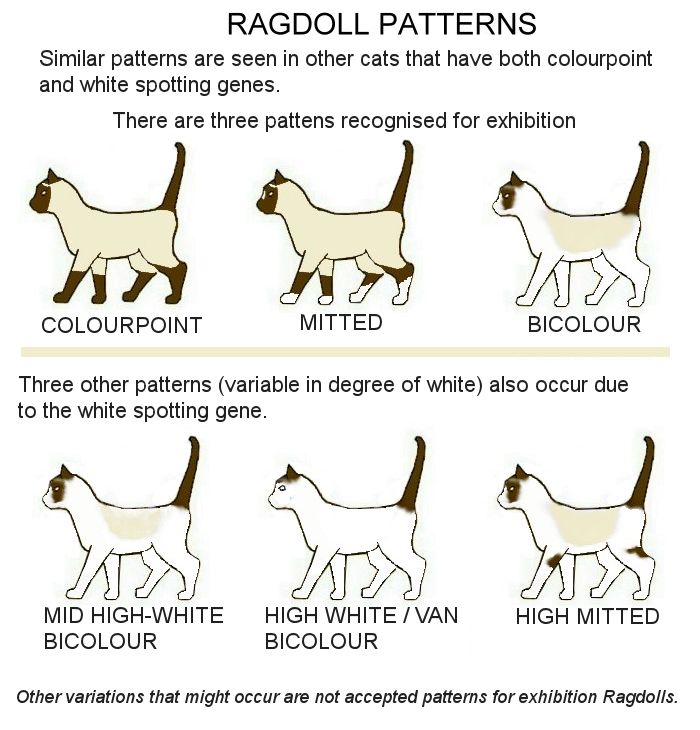
8. Non-Extension Gene: Amber and Russet
These two genes cause the eumelanin to fade, leaving behind reddish tones. Amber (in Norwegian Forest Cats) causes black to fade to amber, and blue to fade to light amber. The kittens are born black or blue and fade as they reach adulthood, starting with the dorsal region. Russet is found in the Burmese; kittens are born an unusual lilac/chocolate colour and eventually turn reddish. The progression of the colour change is depicted in the chart below.
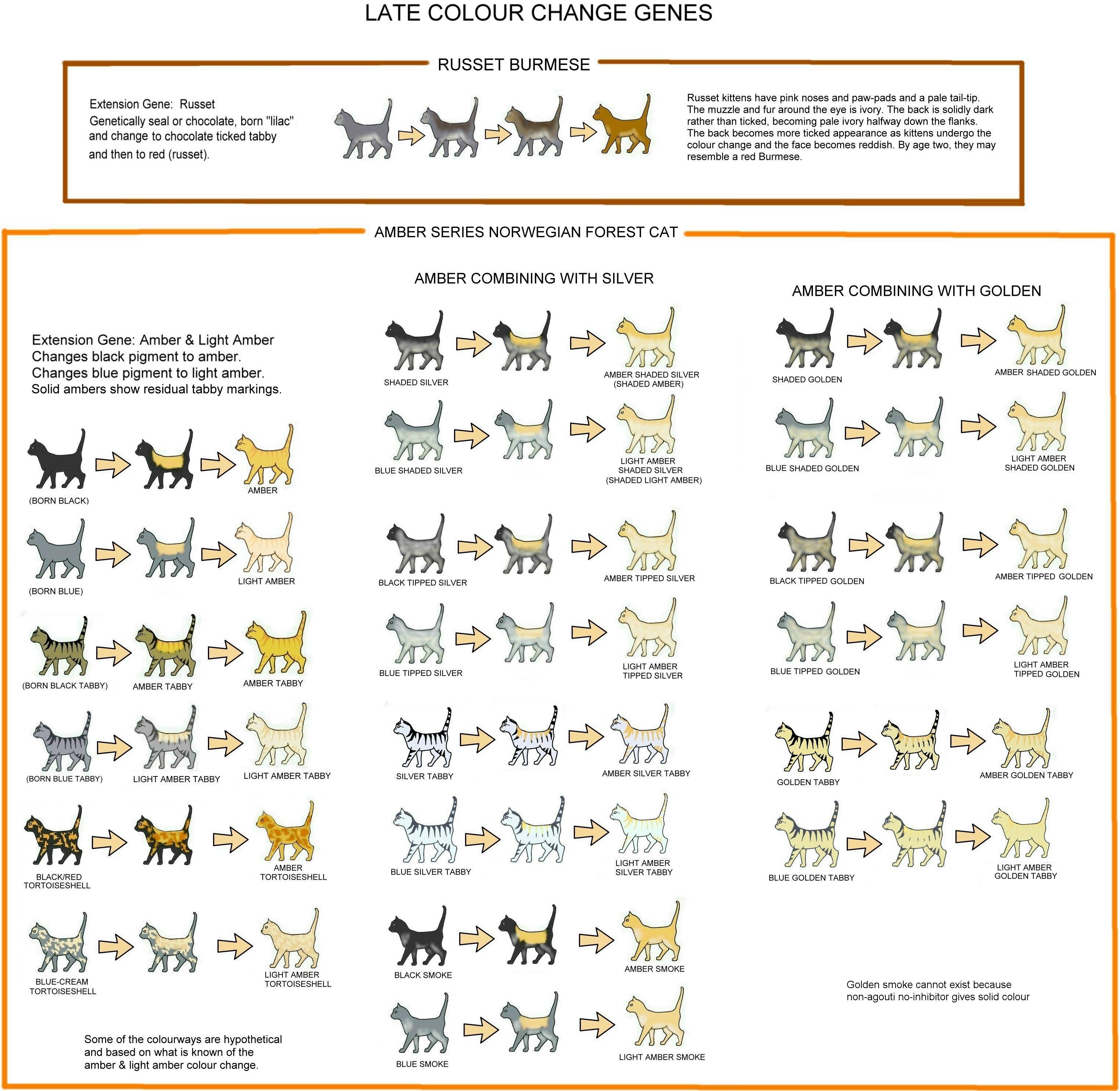
9. Pink-Eyed Dilution
Pink-eyed dilution was reported by NB Todd NB in 1961. “A pink-eyed dilution in the cat” (Journal of Heredity 52, pg 202). The usual type of dilution found in cats is blue dilution which turns black into grey. A second type of dilution seen in some mammals is “pink-eyed dilution” which gives a bluish-tan/fawn coat and also depigments the eye, giving a pink or ruby appearance. According to Todd, this has been reliably reported only once in cats when a pink-eyed female with a light tan coat was produced. None of her kittens survived so pink-eyed dilution in cats seemed to have been lost. In 2015, a pink-eyed Sphynx kitten of unidentifiable colour appeared in Australia. It matched the description of bluish-tan/fawn colour andhad gold irises with ruby red pupils. Genetic testing ruled out the known dilution and albinism genes.
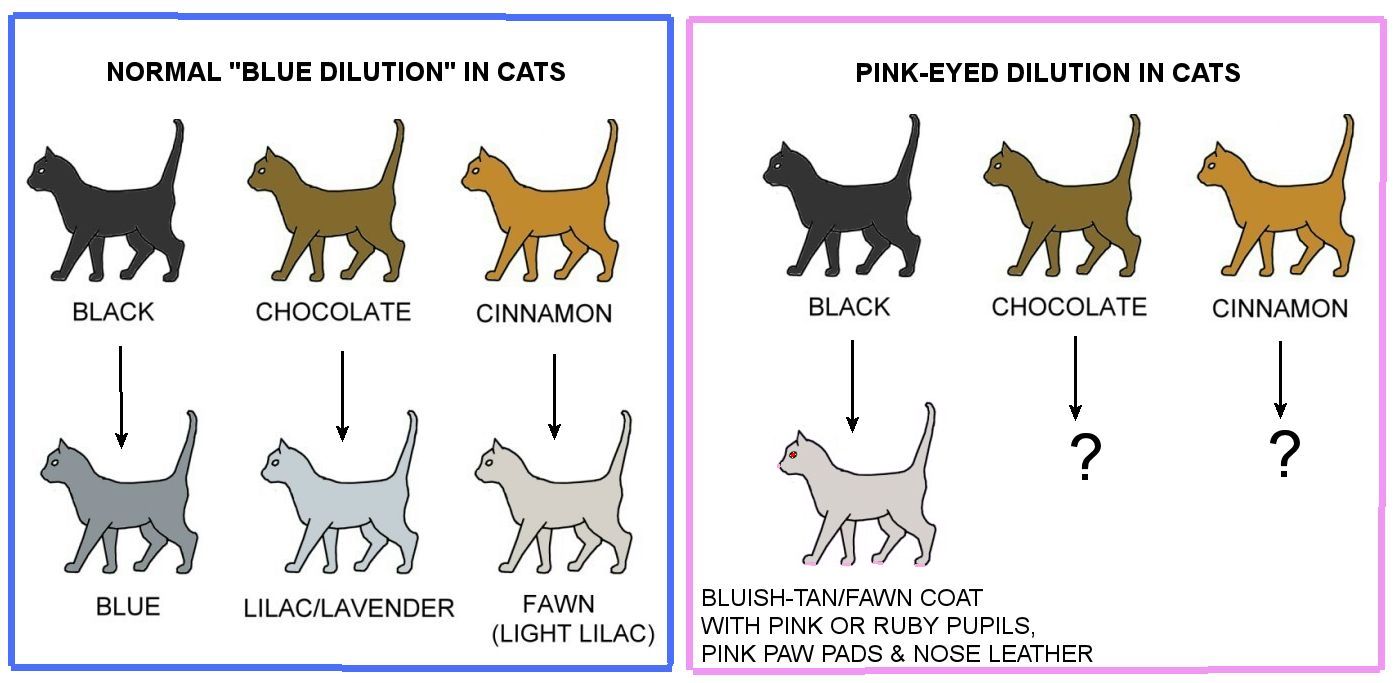
10. Recently Noted Mutations of Red Pigment
These colours are under investigation and may not be true mutations, just slight modifications of how known genes are being expressed visually. For now I’ll use the term “mutation” in a very loose sense. All of these occur on cats that are genetically red. The colours visuallyb resemble eumelanin (black pigment) colours even though no black pigment is present. One mutation/modification turns red pigment into a rich cinnamon colour. Another turns the ground colour of red tabbies to a bluish/lilac colour. This may also be responsible for the bluish tones at the extremities of some red cats.
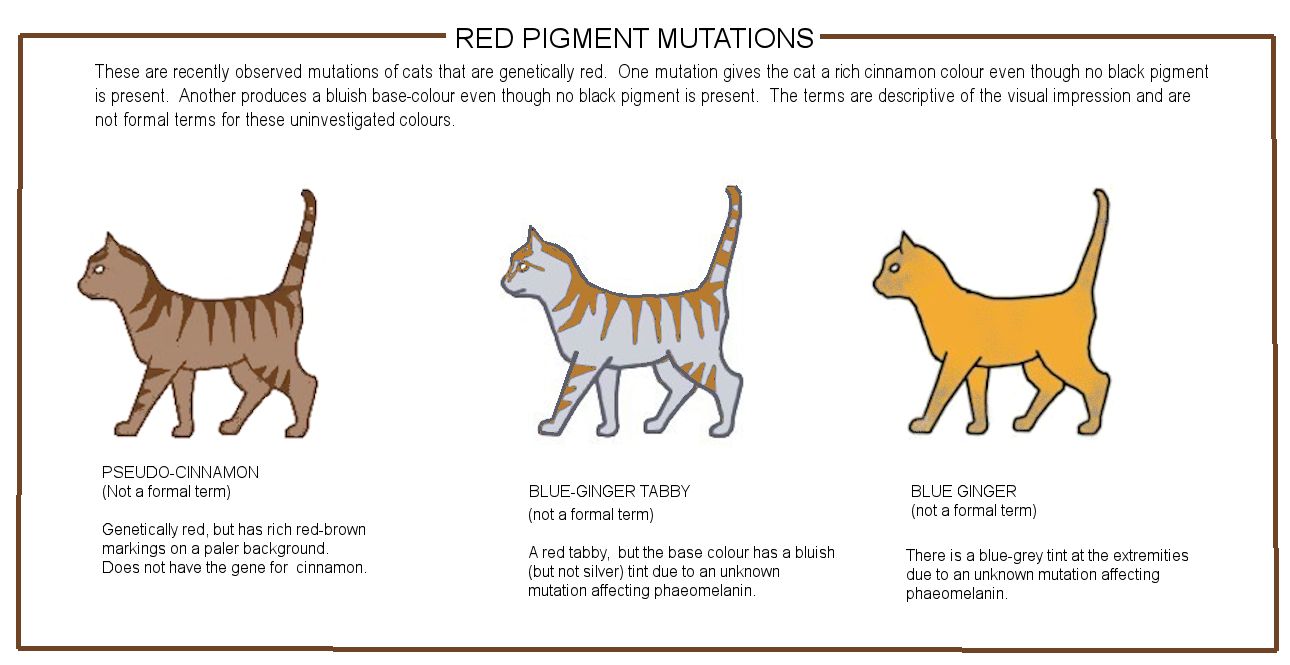
11. LaPerm Bleaching (Colur fade) Mutation
Noted in 2015 when some cats born with normal full coloring became totally “bleached” on the body as they grew, leaving only the face and legs still normally coloured. The colour fading began around 10 weeks of age and may be a new TYR (tyrosinase) mutation. The Karpati mutation and silver have been ruled out.
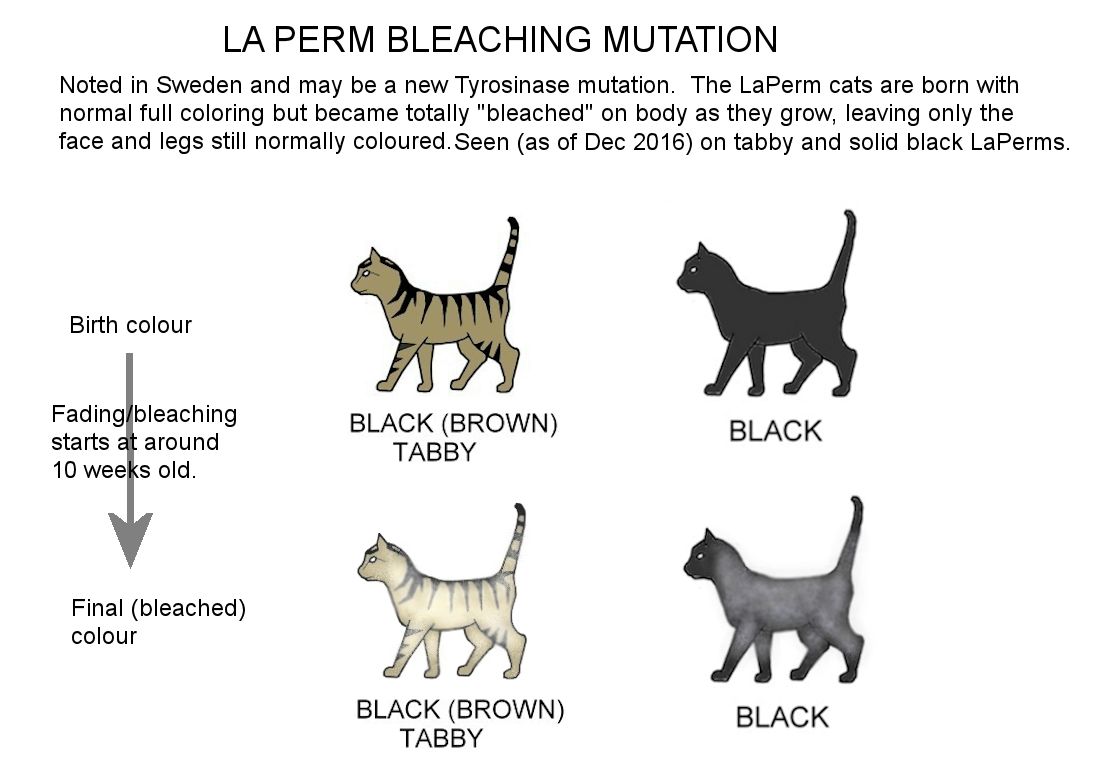
12. “Copper” (Ultra-Wide-Band) Phenotype in British Tipped Golden Shorthairs
The unofficial term “copper” was adopted by Linda Petersson Wahlqvist to describe Golden Shell (Golden Chinchilla) cats with white toes, white undersides, golden colour with the dark tips (e.g. black or blue) restricted to the tail tip and an absence of dark nose-liner. These phenotype deviates from the standard for tipped cats, but is becoming prevalent in Russia and in some German lines of British Golden Shorthairs.
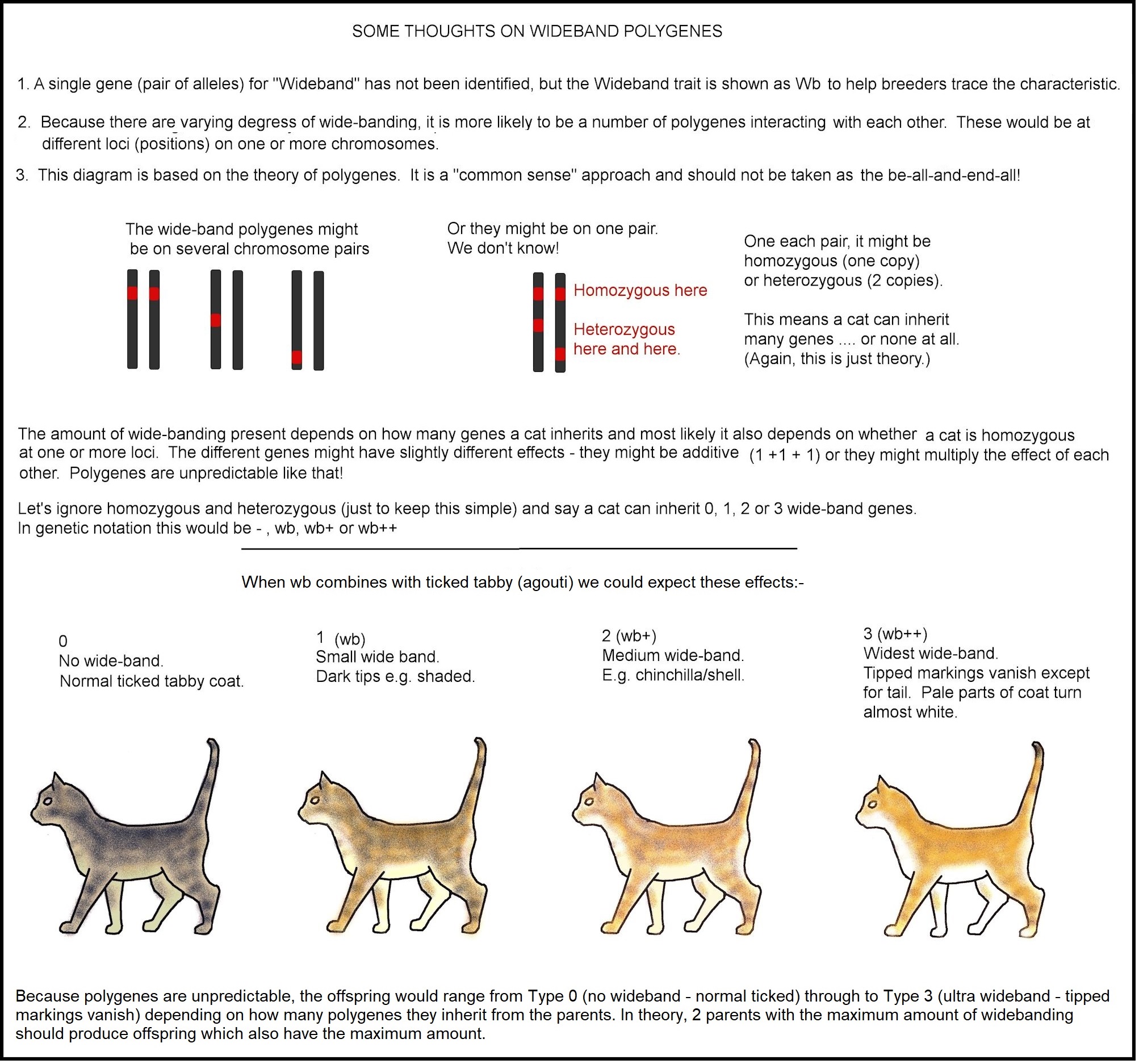
13. Chimeras (Cats Resulting from Fused Embryos) and Somatic Mutations
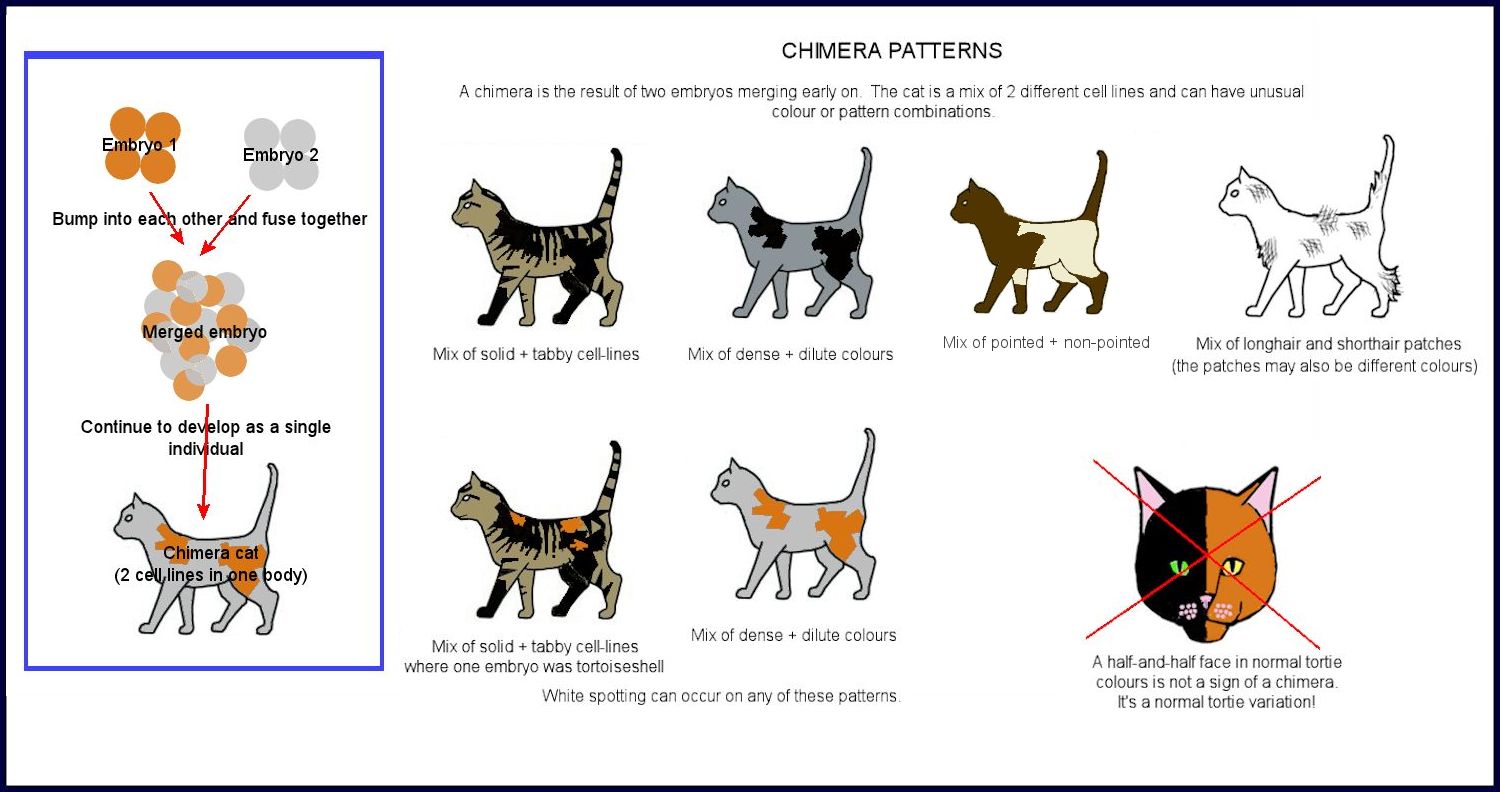
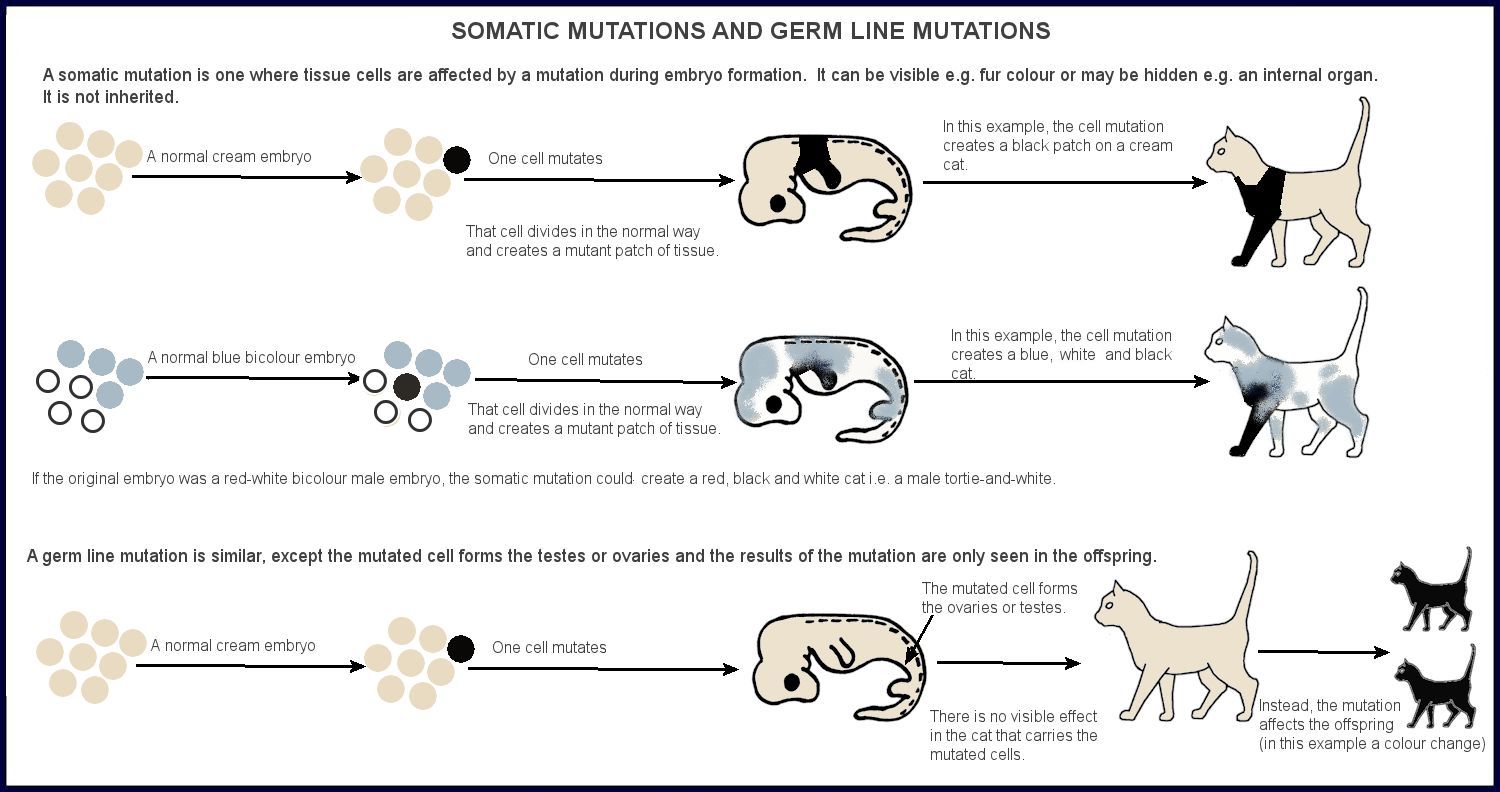
14. Eye Colours
Eye colours are associated with coat colours. Random-bred cats have the widest range of eye colours while the eye colours in pedigree breeds have been restricted by selective breeding. In other breeds, the gene that causes the colour/pattern also affects the eye colour e.g. blue eyes in colourpointed (Siamese pattern) cats. Blue eyes or odd eyes are mostly associated with solid white cats or cats with a large amount of white on the face. A Russian breed called the Topaz has blue eyes or odd eyes that are independent of coat colour e.g. blue-eyed solid black. In addition, some Russian Topaz cats have such dark eye colour that they appear black and the pupil is only discernible using reflected light (it reflects red).
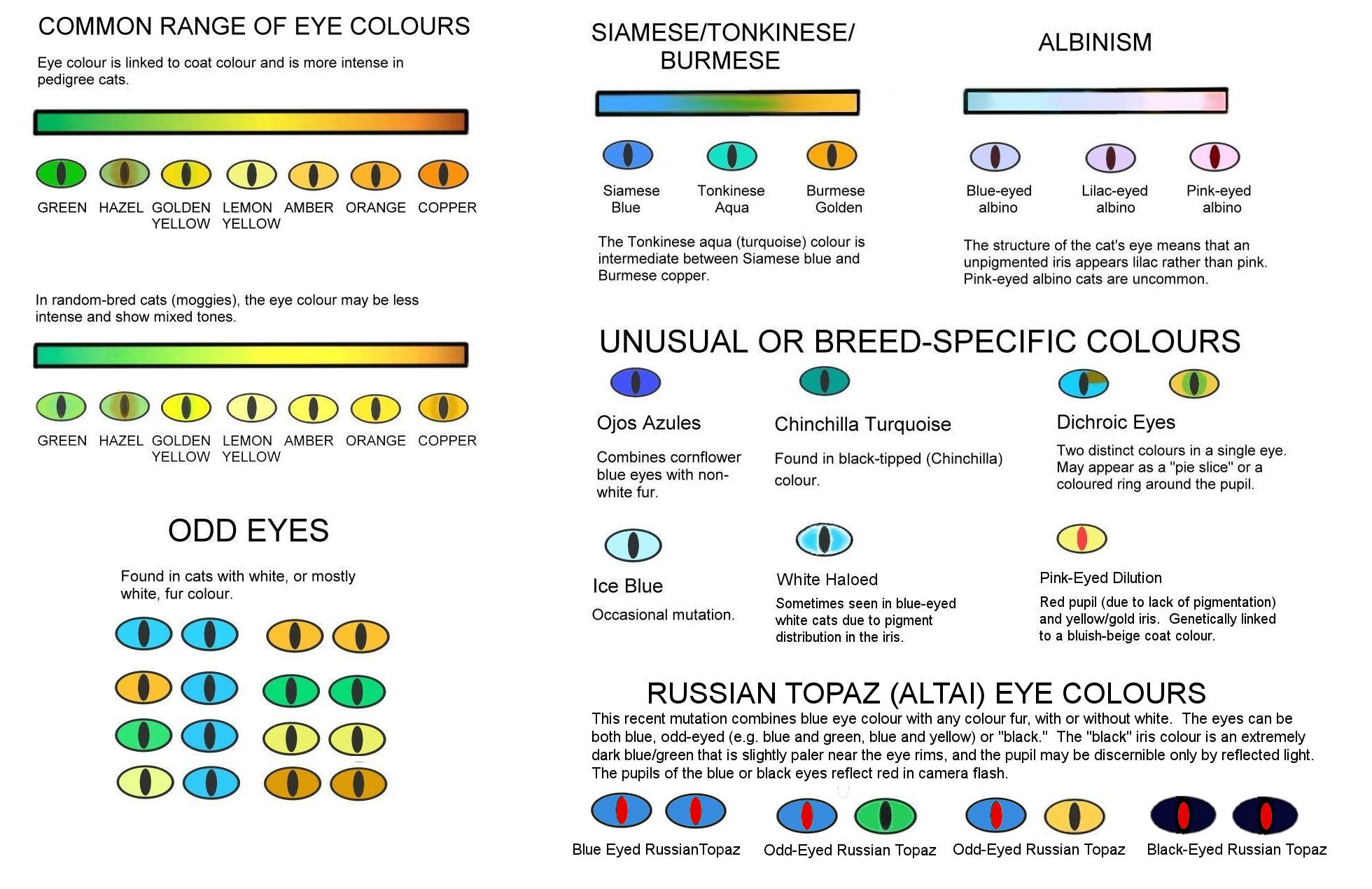
15. Shimmering Effects
Shimmering effects either affect the structure of the fur or are due to white or translucent tipping of the hairs. Effects seen to date are grizzle (in Chausies), silver tipping (in Korat and Russian Blue) and Satin (in Tennessee Rex). Sparkling effects are also found in the Bengal.
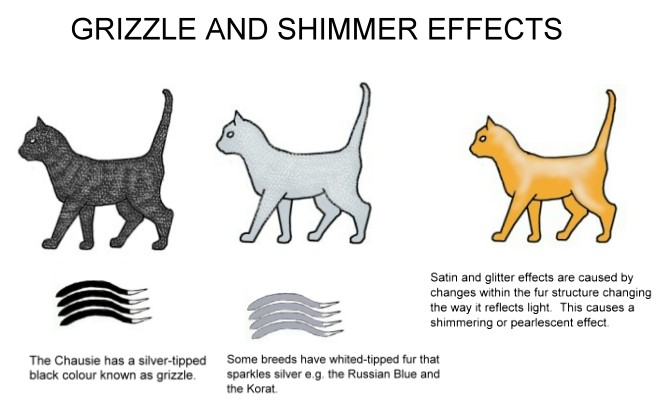
16. Posited Tan Series
This gene has not yet been seen in cats, but in dogs it is an allele (alternative gene) at the agouti locus, while in rabbits it is a combination of agouti and extension genes. This chart is a suggestion of how colour-and-tan cats would look if the mutation occurred. Theoretically it could be combined with white spotting, colourpointing and silver/golden series. The possibility of tabby-and-tan patterns would depend on how the tan gene, if it occurred in cats, interacted with existing genes.

17. Posited Merle Series
This gene has not yet been seen in cats, but is found in dogs. Broadly speaking it manifests as patches of dense colour on the equivalent dilute e.g. black patches on a blue background, black patches on caramel, red patches on cream. This is different from tortie where the patches are a mix of a black-based colour with a red-based colour. The only instances of this phenotype in cats have been chimeras where one cell line has the dense colour (e.g. black) and the other has the corresponding dilute colour (e.g. blue). Theoretically it could combine with existing colours and patterns, but would only show to good effect on dilute-coated cats e.g. a blue/cream tortie with black patches, or a lavender (lilac) tabby with chocolate patches. Theoretically these could also be combined white spotting, colourpointing and silver/golden series. The chart shows how merle might manifest in cats should the mutation occur.
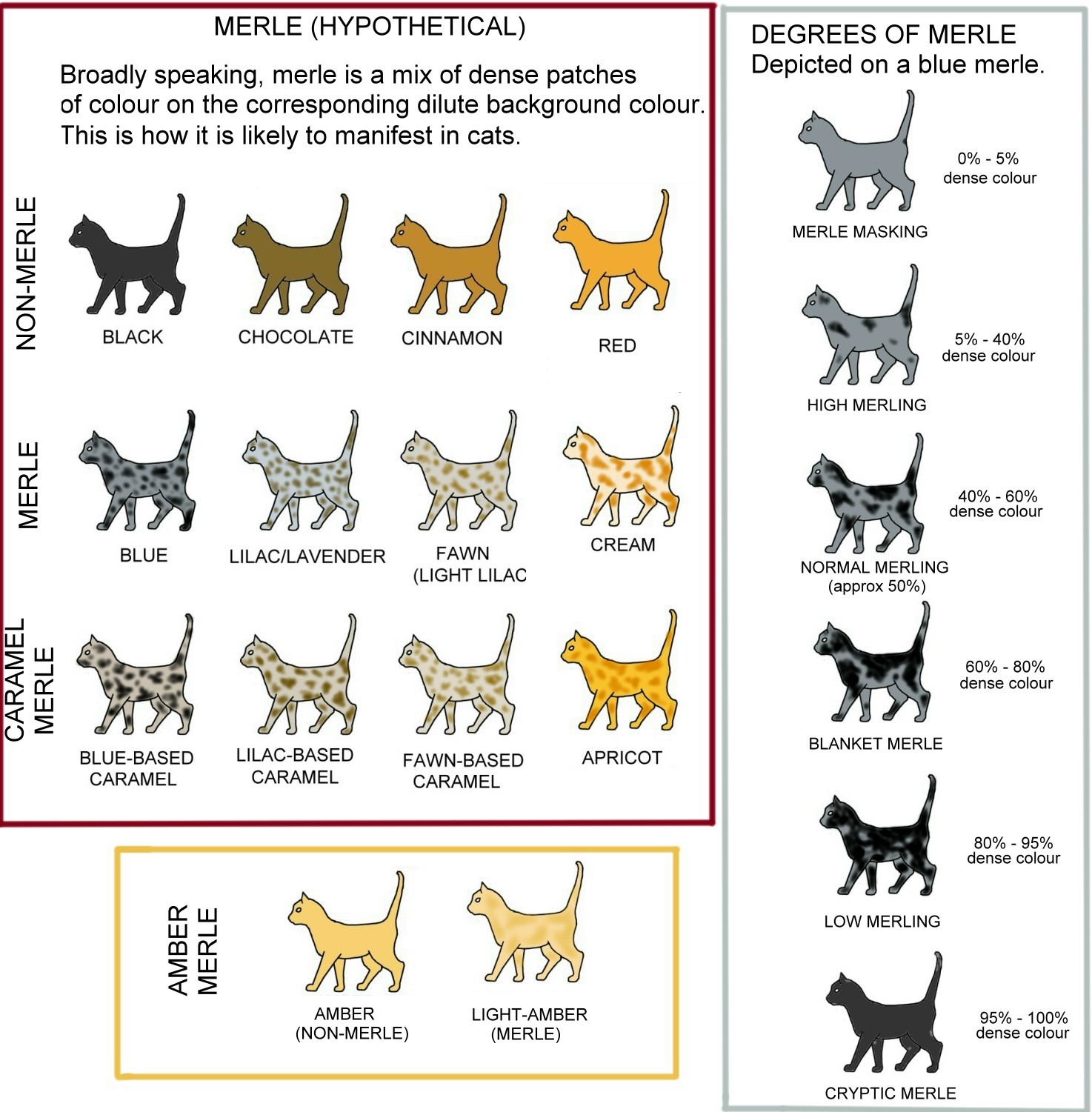
18. Imported Colours/Patterns
Some colours and patterns have been imported from a wildcat ancestor. Some of these have already been detailed e.g. charcoal pattern Bengals, grizzle pattern Chausies and the rosetted and marble/clouded pattern seen in several hybrids breeds. The following are 2 novel patterns derived from wildcat x domestic cat crosses. The Rusty Spotted Cat hybrid illustration is based on descriptions of purported hybrids. The Sand Cat hybrid illustration is based on photographs of F1 kittens.
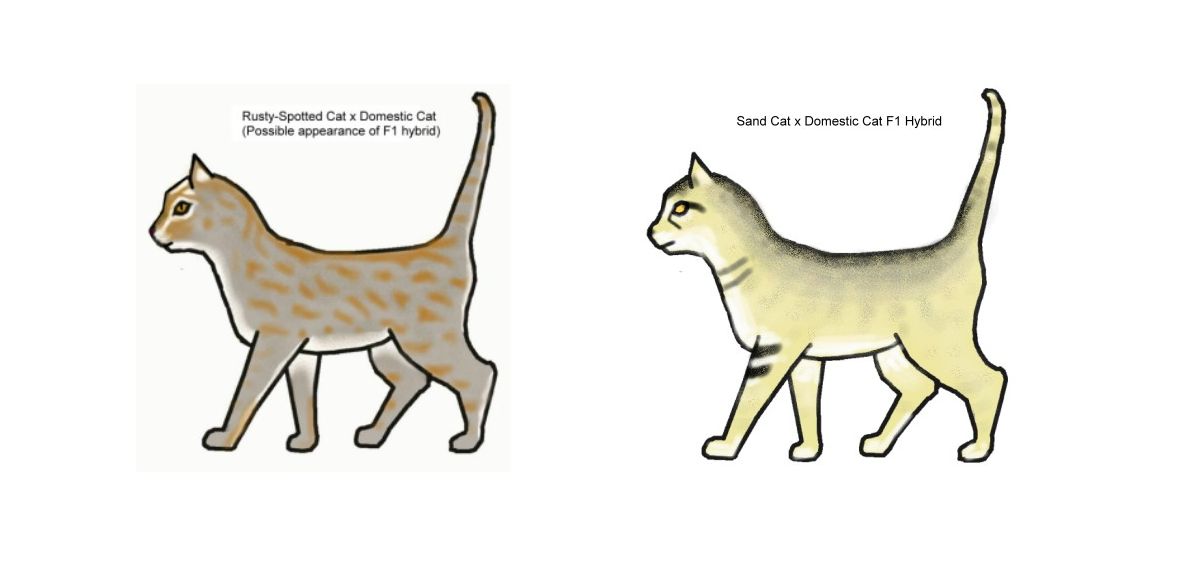
19. Colours Described in Historical Thai Texts
Several of these varieties are now being conserved, while others have not been observed in modern Thai cats. They are considered colour variations of the Maew Boran (the Thai Natural Breed) and not separate breeds.
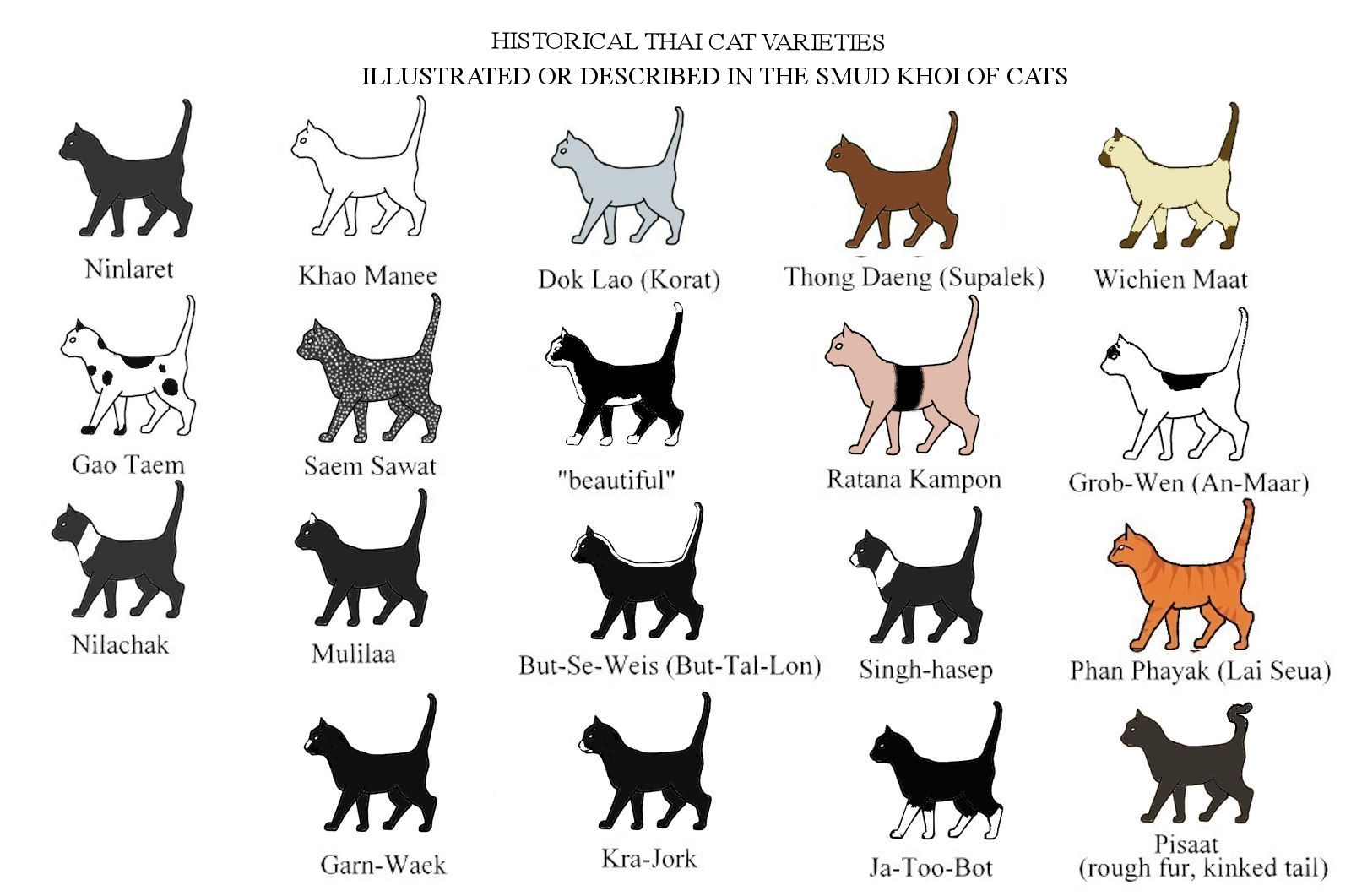
20. Colour pattern Mutations in Big Cats
These have been depicted on a spotted big cat as this is the most common pattern, however a number of these mutations occur on striped, rosetted or clouded patterns as noted on the chart. This chart is included for comparison and general interest.
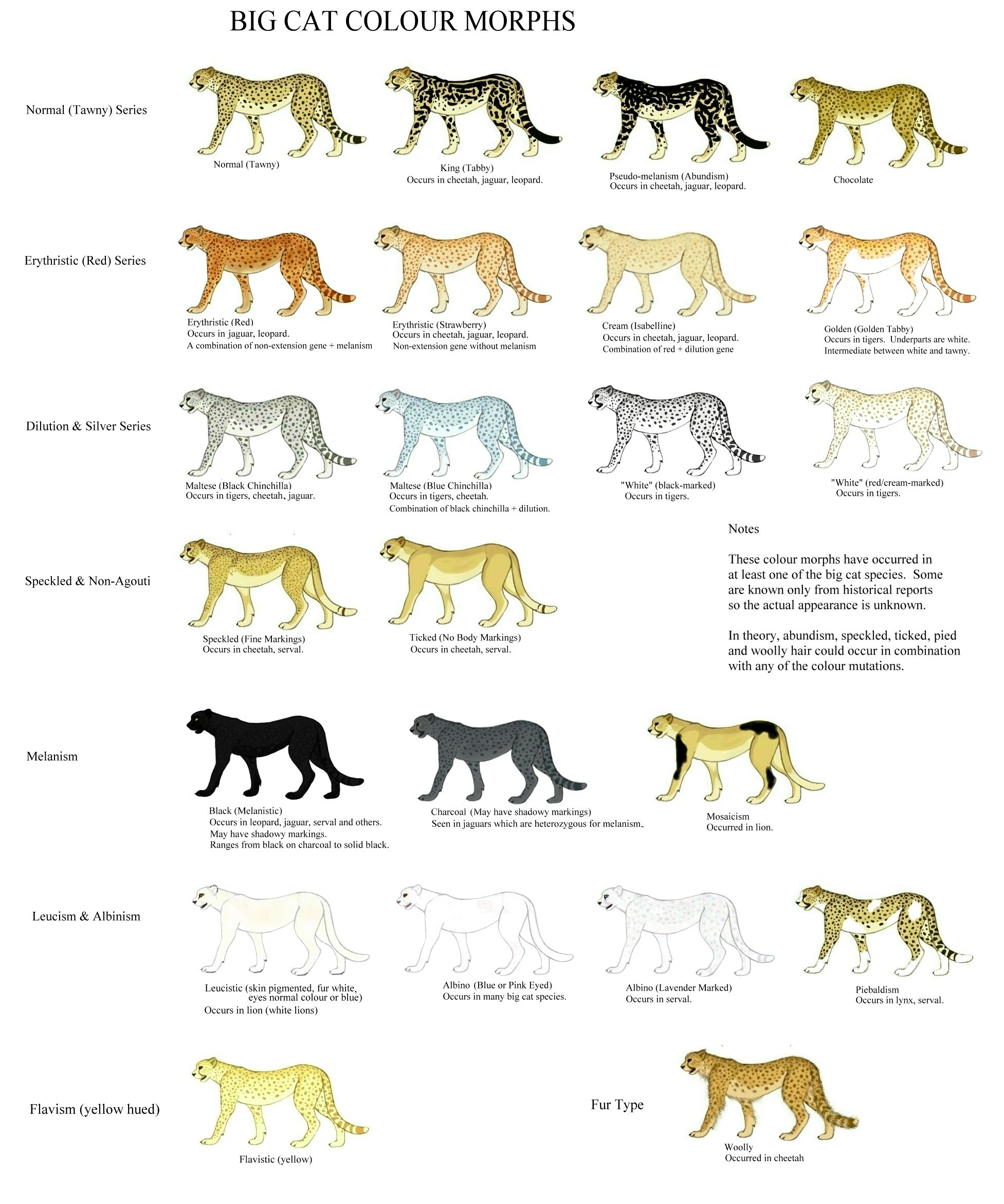
People also ask
